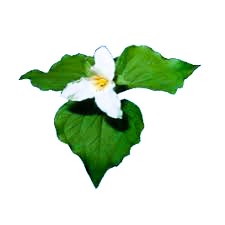The Trillium on the Web
The online newsletter for NARGS Piedmont Chapter
Find us on Facebook https://www.facebook.com/PiedmontNARGS/
and Instagram https://www.instagram.com/piedmont_nargs/
Tonic for the Garden(er)
Invitation to a Symposium
A special message from Panayoti Kelaidis, Denver Botanic Gardens: Click link below for complete details
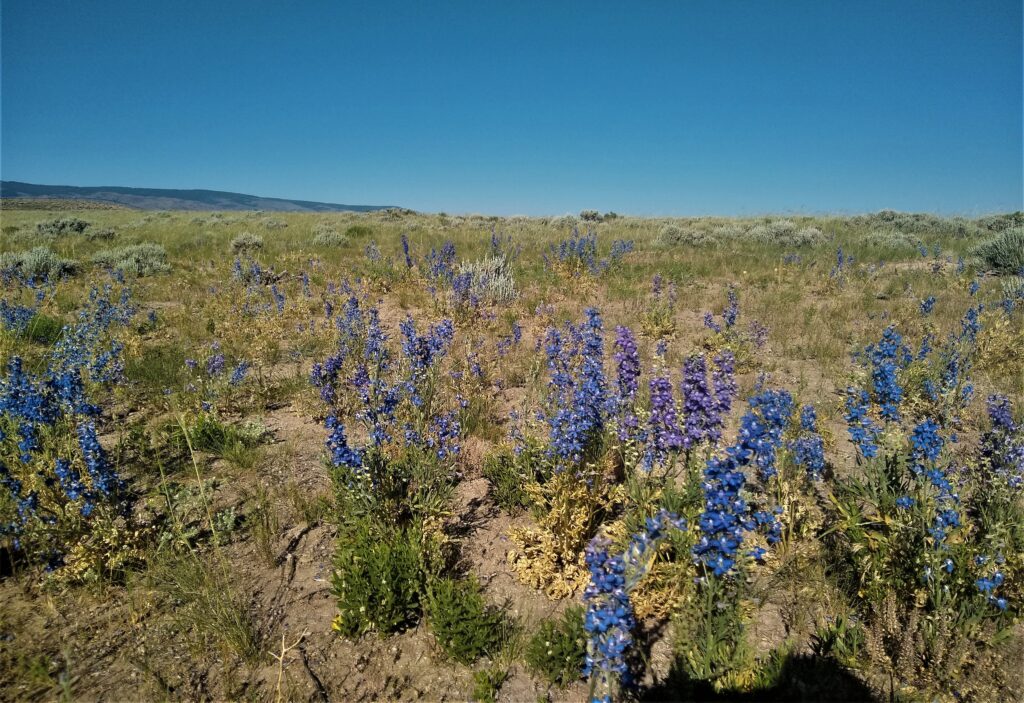
Gardening, by its very nature, is generally a solitary occupation. We indulge our inner introverts by delving deep into nature, uprooting weeds, pruning the four “d’s” off of shrubs and trees (the diseased, dead, deformed and demented!). I don’t know about you, but come spring—especially if it’s a warmish day with a bit of humidity in the air so everything smells sweet and strong—and I practically run out into the garden and begin to work. The day flies by “like an arrow” as they say in Chinese. Next thing you know the sun’s setting and you go inside reluctantly. It’s magical stuff—and let’s not even talk about delicate flowers or masses of gorgeous bloom. Don’t you feel sorry for those who don’t have gardens?
Most of us have in-house critics, who ask us unbelievable questions such as “do you really think you need more plants?” or “how much have we spent on soil and amendments the last few years?” We can hardly be blamed for seeking out fellow conspirators–a gardener a few blocks away, or nowadays someone we swap email messages with on the Internet—with whom we can share garden thoughts, plants and commiserate over the bulbs dug up by the damn squirrels!
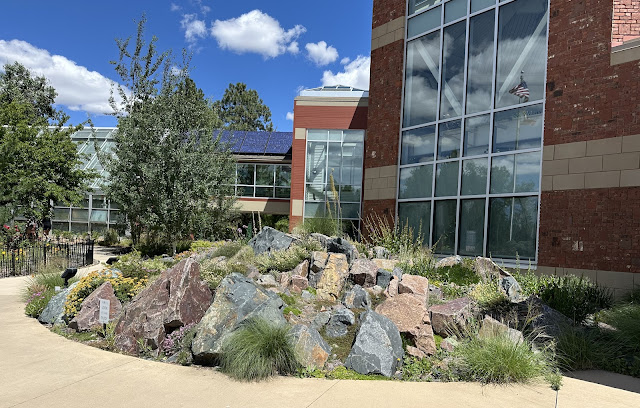
Imagine, if you will for a moment, a whole auditorium full of such people—and you have a pretty good image of a NARGS Study Weekend or Annual Meeting. I must warn you, these are addictive! I’d hate to count how many of these I’ve attended over the decades (the first for me was in Seattle and Vancouver in 1976—49 years ago!) I cannot begin to relate what I have learned at such meetings or the friends I’ve made and the heros I’ve come to know. Jim Archibald was one, who was selling plants at Alpines ’81: little did I suspect at the time that he would use our home as a base of operations as he and Jenny collected across the Rockies and Great Basin in the summer of 1987, or that he and I would collect seed together in Africa a few years later or that we would go to Wales several times to visit. Multiply that by people manifold—the memories are golden!
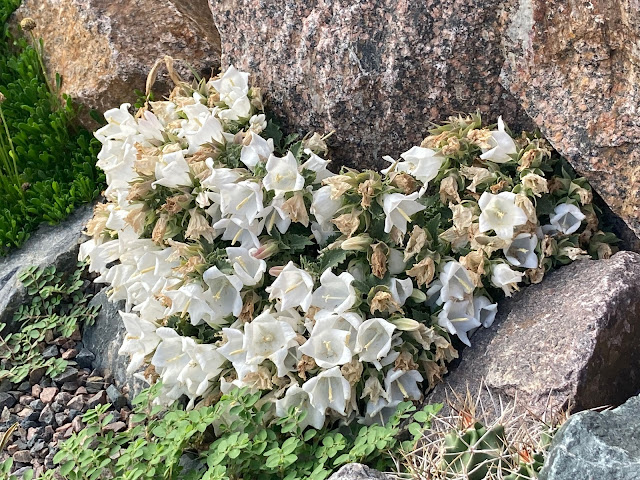
This June the NARGS Annual meeting (“Peaks and Prairies”) will be held in Cheyenne, Wyoming—a relatively small, charming city, with a fantastic botanic garden few large cities can match. Cheyenne is surrounded by vast natural areas—many of which will be featured during and after the conference: shortgrass prairie full of paintbrush, penstemon and buckwheats. Several mountain ranges are nearby: the Laramie Range, the Medicine Bow (or Snowy Range) and the northern Front Range. And throughout Laramie and Albany counties, there are concentrations of rare cushion plants–many endemic–which will be in full bloom.
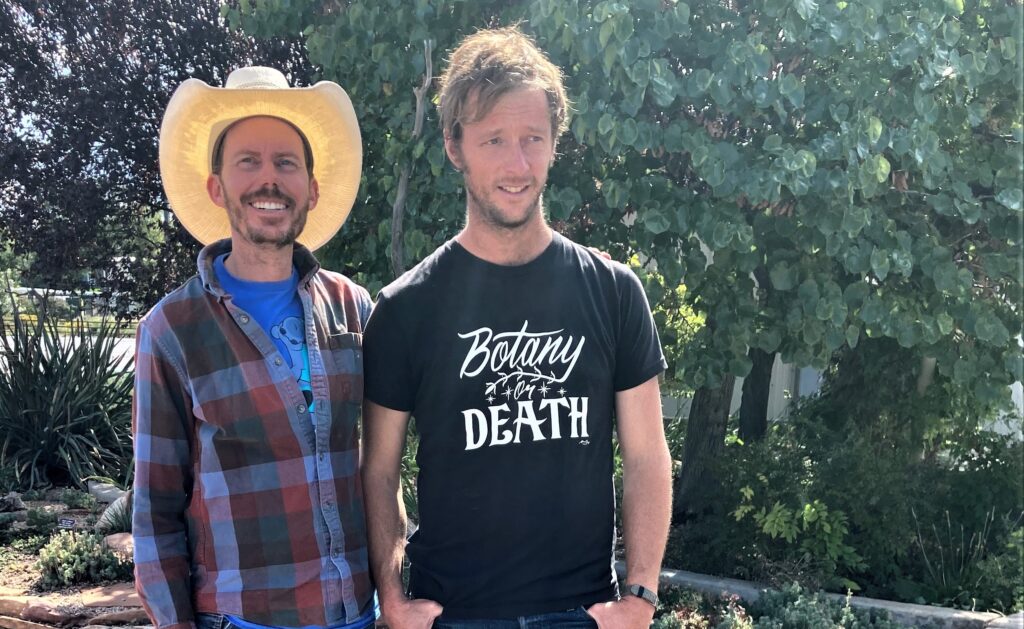
The roster of speakers includes some of the greatest talents of the New Wave of rock gardening: Kenton Seth’s recent book (co-authored by Paul Spriggs) has become a veritable bible for rock gardeners—believe me, Kenton has new things to convey. Mike Kintgen has been Curator at Denver Botanic Gardens for several decades: he has researched rock plants and gardens around the world, and always has fresh ideas and wonderful images to share. Connor Smith—who gardens at Utrecht Botanic Gardens—is also a world traveler in the forefront of European rock gardening. And several local specialists will provide programs on the rich geology and botany of the area.
There are numerous options for flying directly to Cheyenne, or if you plan to take a few days extra, perhaps fly to Denver and rent a car (it’s only 100 miles away). One thing you can be sure of—you will have wonderful programs, beautiful venues, great gardens and natural destinations at the peak of bloom. And droves of the best gardeners from across North America (and beyond) to chat with dawn to dusk! And beyond!
Click here for more info (and sign up!):
https://www.ticketleap.events/tickets/cheyenne-botanic-gardens/nargs-conference
Hope to see you there!
Panayoti Kelaidis
March 2025
Special notice for Piedmont Chapter members from Amelia Lane, Nominating Committee Chair:
Officer nominations are presented to the membership at the March meeting, then placed in nomination at the April meeting. Nominations may be made from the floor in April, when the vote takes place. The proposed slate is for Chair, Sandy Harwood; Vice Chair, Bobby Ward; Secretary, Char Thomann; Treasurer, Cyndy Cromwell. Directors serve for three year terms, and will be voted on in 2026.
Featured Article
Obsessions:
The Galanthus Gala, Downingtown PA
by Ruth Little

Sometimes social media gets a bad rap, but without it I wouldn’t have known much about The Galanthus Gala. There was a passing mention by David Culp a few years back, in an exchange as he signed a book for me. “You should come” he said.
The pictures on Instagram were like catnip. People in America were growing Snowdrops and growing them well. I had been to Montrose Gardens’ Snowdrop Walk, and even bought a few snowdrops from Nancy Goodwin. The first time I went on the snowdrop walk I even hugged her in thanks, a move I may have been mortified by on reflection, and I put it down to having been a bit homesick for the snowdrops I used to see back home in the UK – a pure, unfiltered, emotional
response. However, unlike snowdrop weather in the UK it was so warm that I believe we were in short sleeves that year.
The seed(bulb?) had been planted: I could grow snowdrops here, and I would grow snowdrops here…
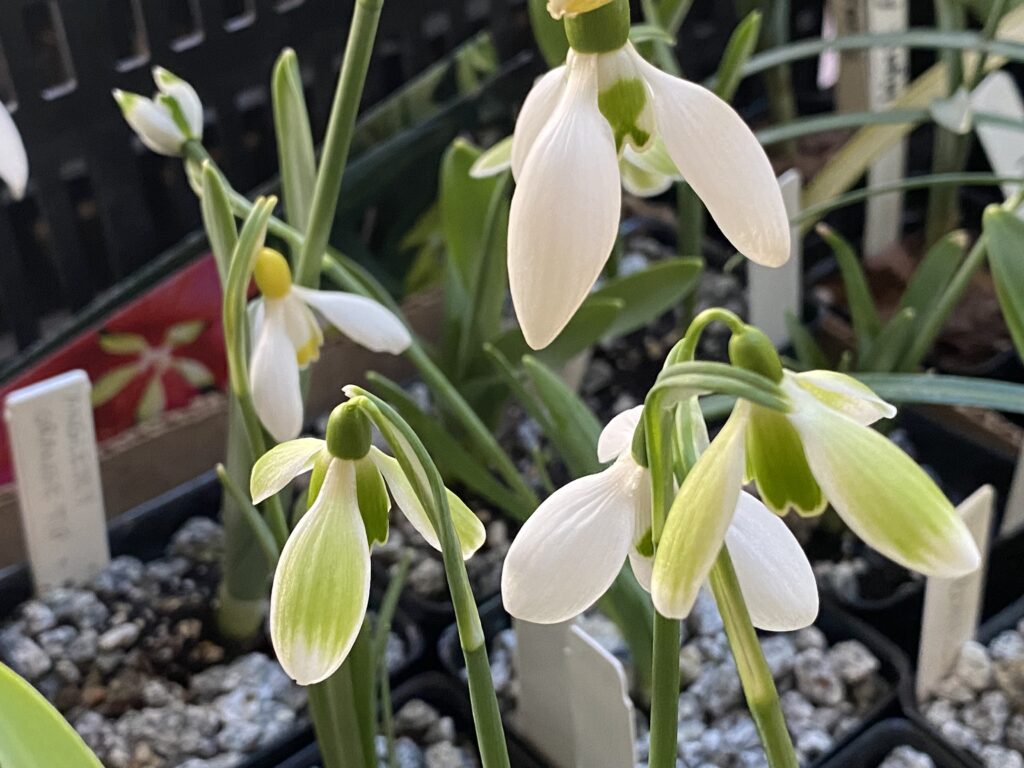
Gala Prep
I attended the Galanthus Gala in 2024, traveling solo by air. I took an Uber to Downingtown from Philadelphia airport and nervously introduced myself to strangers in the lobby who looked like they were heading to the same place. I met a few folk I’d only “met” previously online as Mommapud, my name on Instagram. Exhibiting absolutely no stranger danger I gratefully accepted a ride from a guy who took pity on me being drenched as I headed towards the venue. Thanks again
Troy Marden!!
I made a few rookie errors on that first trip, like being on foot, while staying in an event discounted hotel which was very close to the venue, but quite a walk from the town itself in the bitter cold and driving rain. Another mistake was forgetting my check book, and not bringing enough cash. Cash and checks were king, so I was ill prepared.
Now a seasoned veteran, come late February 2025, I was ready. I had my ticket booked in case they sold out like the
previous year. I was driving, I had my check book, I had bulb crates, and most importantly…cash in mixed bills, aka how to make friends with the vendors.
What happens at the Galanthus Gala?
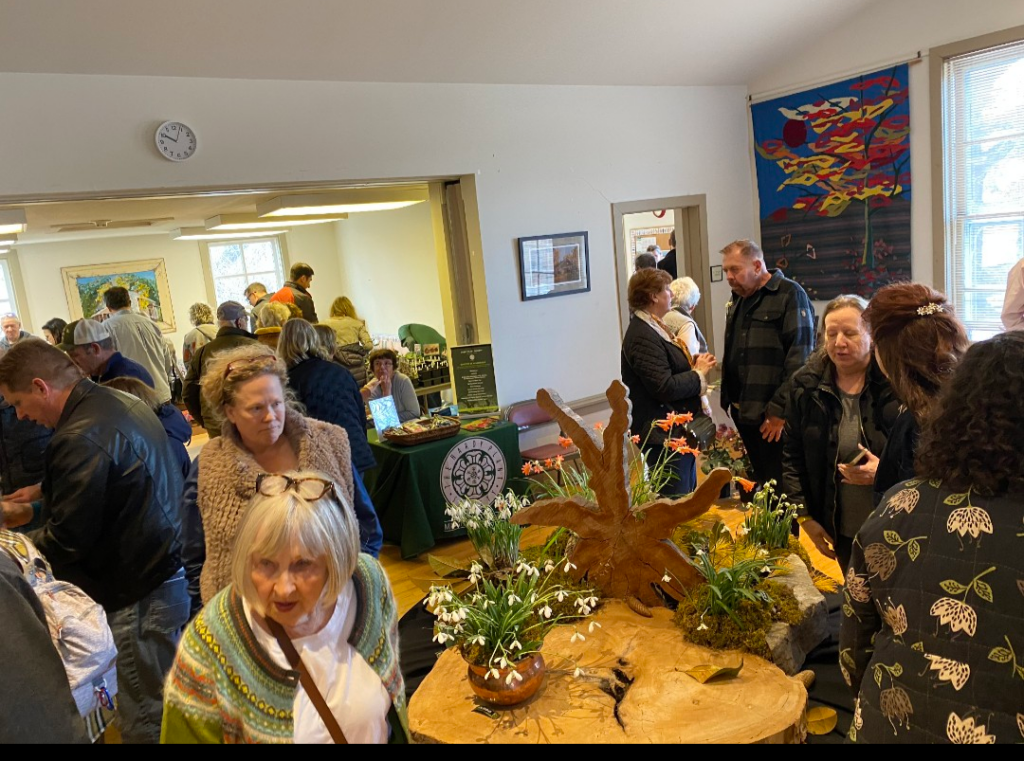
The Gala first occurred in 2017, the brain child of David Culp. He took it upon himself to bring some of the experts he was meeting in the UK and Europe to America, to present talks to his like minded friends here. In the way of many marvellous things, if you build it they will come. The kick off to each event occurs on the Friday night of Gala weekend at 4pm with a Happy Hour over Zoom, including the first illustrious presenter. Indeed the whole event is available via the internet, should you be unable to attend. Last year the virtual presenters were our very own Nancy Goodwin and Tom Bell.
This year we were treated to a wonderful Happy Hour presentation by Brian Ellis on Norfolk Snowdrops, other snowdrops may have been included.
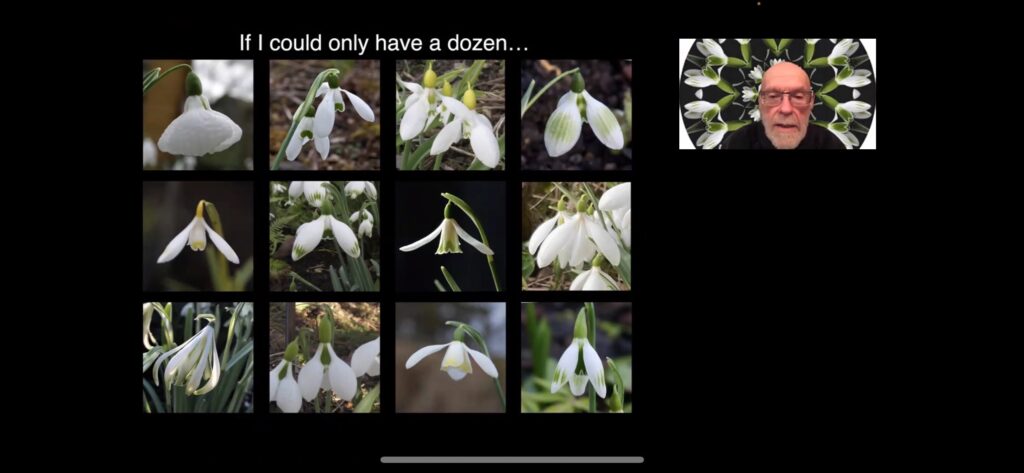
Saturday is when all the in person action occurs. An early bird shopper ticket is available, and I have taken advantage of this both years. Some of the choicest plants are in short supply, and the plant sale building is tight on space once crowded with all those early season shoppers. There have been parallels drawn to the current Galanthus interest and Tulipmania. So at around 8:30am the early birds sign in, get their wristbands and get to know their new “line friends”. There are some outdoor vendors too, but the line business is real. The sales doors open at 9am. Though Martha Stewart was allowed to beat the crowds I hear.
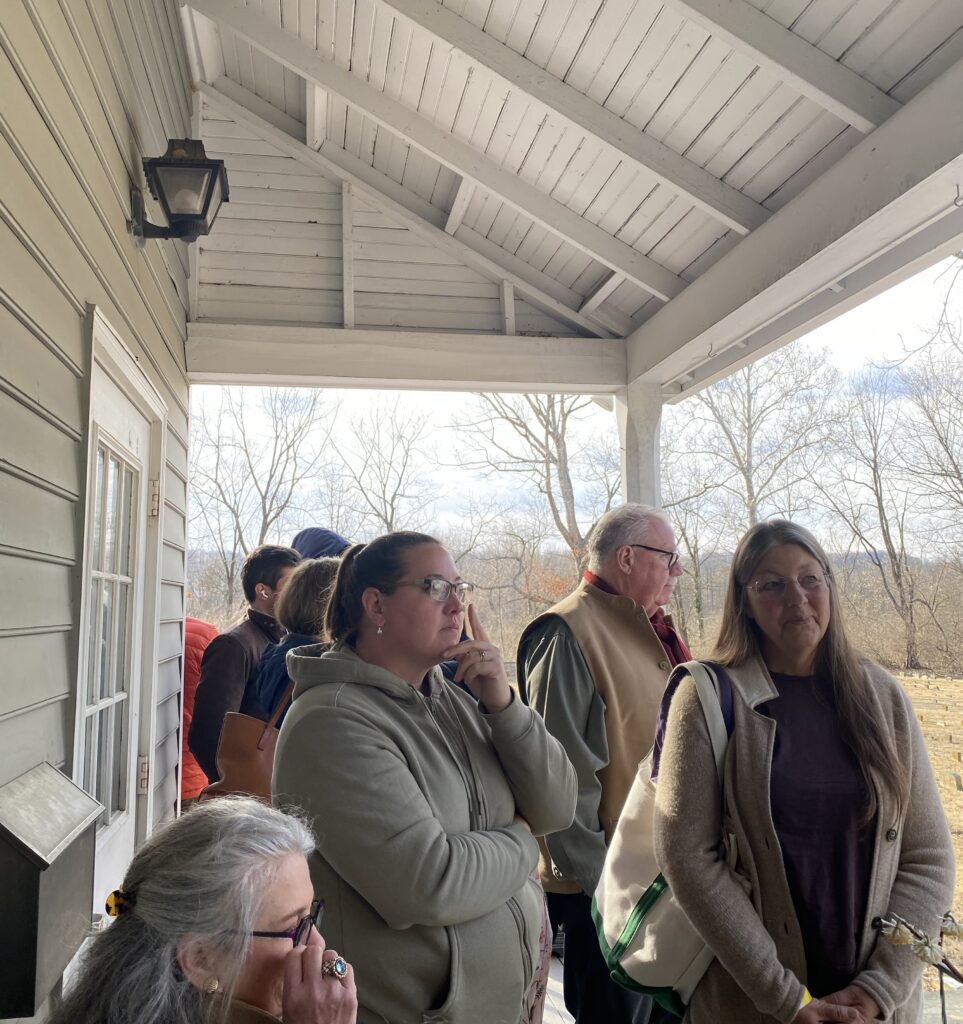
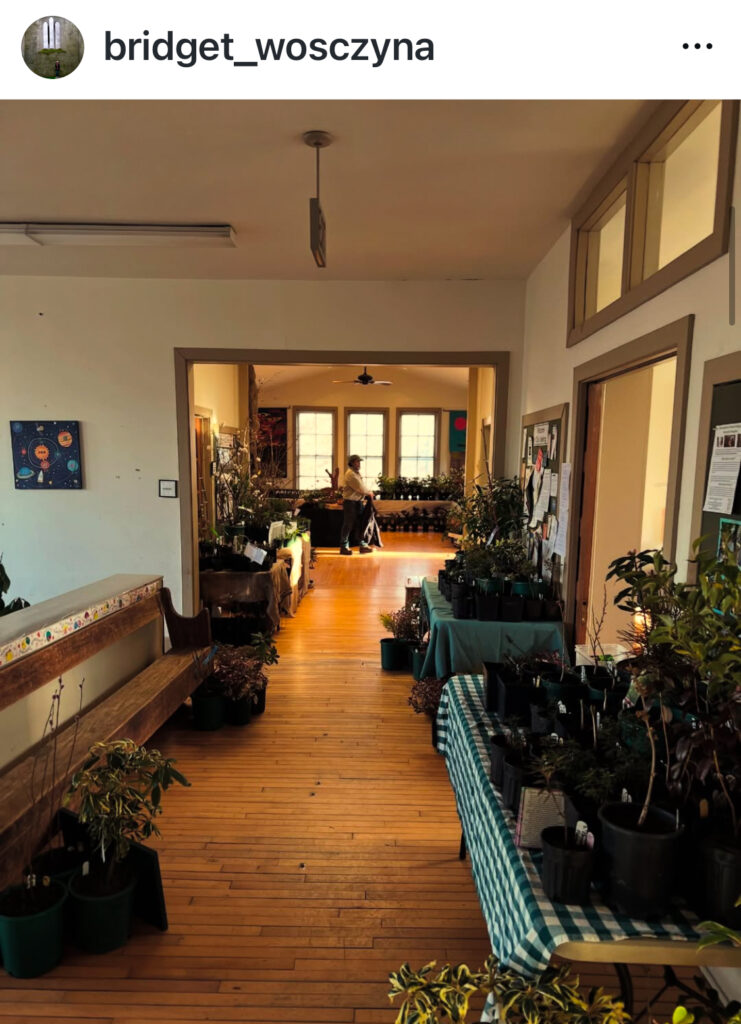
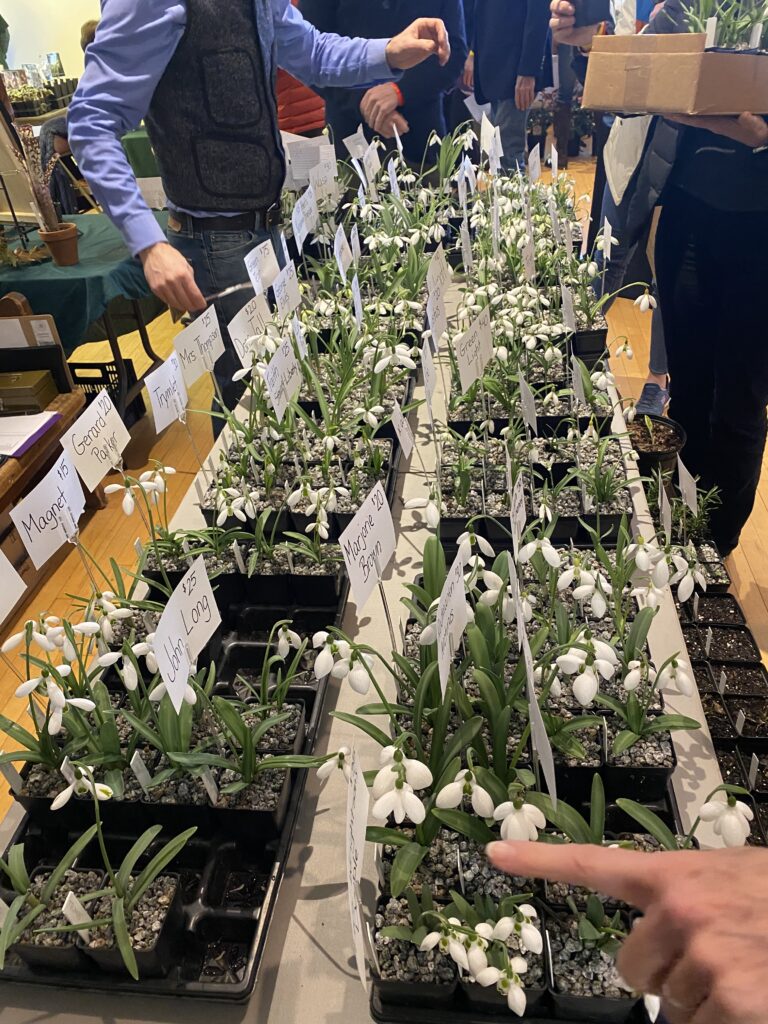
Shopping frenzy and socializing continues until we hear the warning that the first speaker is about to start, scheduled at 11am. We trot across the driveway from the saleroom to a nineteenth century Friends Meeting House where we take our seats in pews. This year, it’s the charming Andy Byfield (currently gardening at Flete Walled Garden, in South Devon
UK) who entertains us with his insights, humor and experiences with Snowdrops; including his escapades working with a program to establish cultivation rather than wild collection of Galanthus in Turkey. While there in 1994 he, along with Neriman Özhatay and Margaret Johnson, found an unidentified snowdrop which proved to be a distinct new species;
Galanthus trojanus.

The afternoon’s speaker, Tom Coward, Head Gardener of Gravetye Gardens near East Grinstead, in Sussex, UK, referred to ‘The English Flower Garden’ by Wiliam Robinson, arguably Gravetye’s most famous owner, having ten snowdrop species listed in its first publication in 1883. Only a few years earlier his friend E.A. Bowles had only listed four. Now, there are more than twenty species of Galanthus recognized.
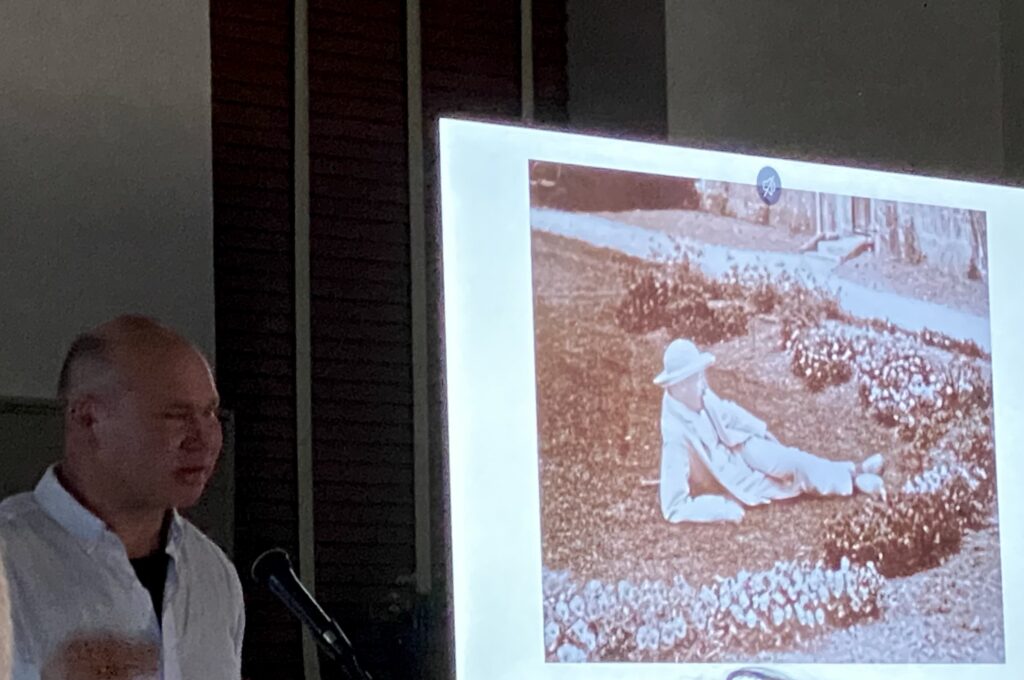
Endearingly, the softly spoken Tom was unafraid to mention the snowdrops he’d killed along the way. It certainly made me feel better about my losses.
I asked vendor Matthew Bricker (mdbricker1500 on Instagram) to sum up how he sees the Galanthus Gala:
I think of the gala as both a celebration of snowdrops (and other unusual plants) and a kickoff to the gardening year. As a vendor, I enjoy introducing folks to snowdrops and connecting with the wider gardening community (we’re hobbyists). I also love the energy I sense in the room, as people discover new plants and connect with garden friends old and
new.
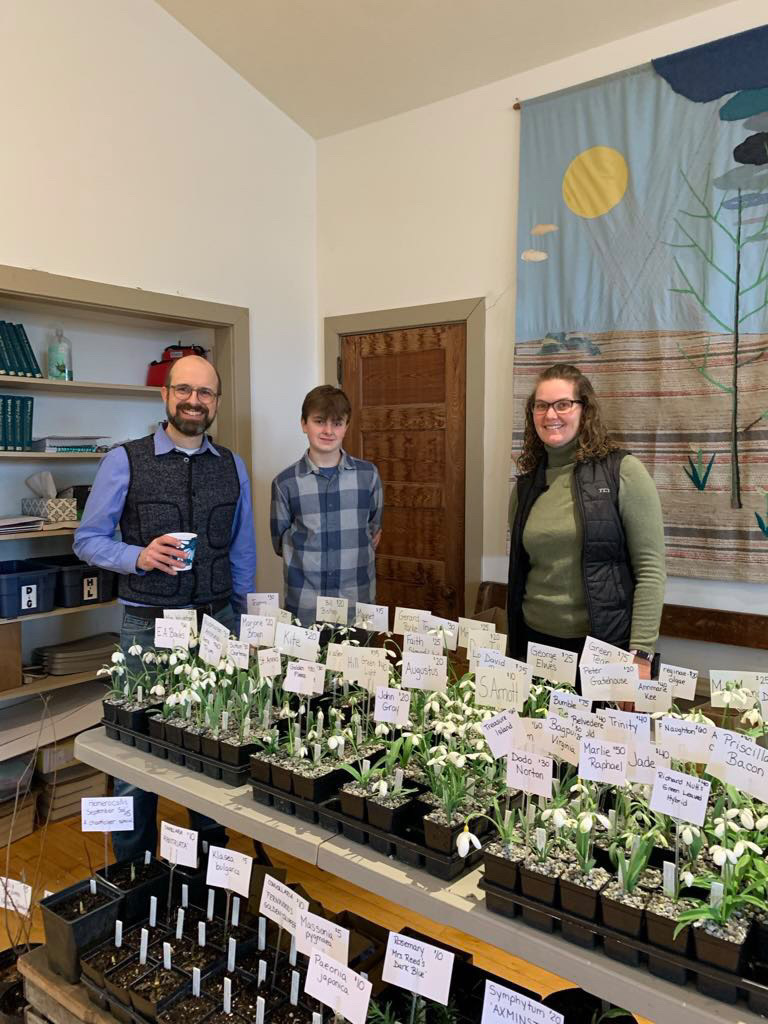
So in summary, the Gala hosts guest speakers and shopping at a one day (in person) event. The event is 412 miles away from where I live, between a six and a half to an eight and a half hour drive away, skirting Richmond, DC and Baltimore traffic. Why bother?
Firstly there’s the subject matter as well as the caliber of speakers and vendors, and lastly that intangible factor, fellowship. Whether it’s as a companion plant or a main focus to them, the folk who congregate together in a Pennsylvania meeting house are celebrating their gardens in the bitter cold of winter, and that I like, rather a lot. After all, what’s not to like about a snowdrop, a flower that symbolizes hope, and Imbolc (Candlemass), blooming like a small beacon in the dead of winter?

February 2025
Featured Article
A Little Taste of Argentina – Botanizing at Reserva Laguna Los Juncos
by Tim Alderton, photos: Tim Alderton
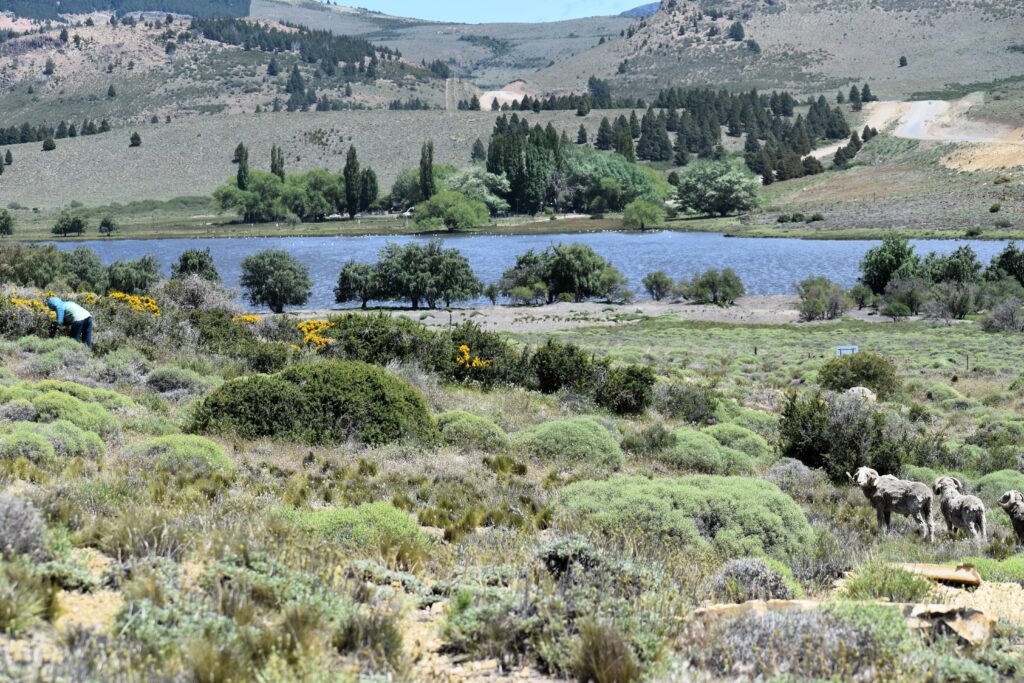
Whitewash from Andean condors dripped down cliffs of a nearby rock formation adjacent to our second stop on our third day in western Argentina. We unloaded the bus to a smaller formation, more of a hill, with low scrub scattered around the base where bright buttery yellow blossoms could already be seen blazing out from a patch of shrubby Senna, blooming on the other side of a barbwire fence.
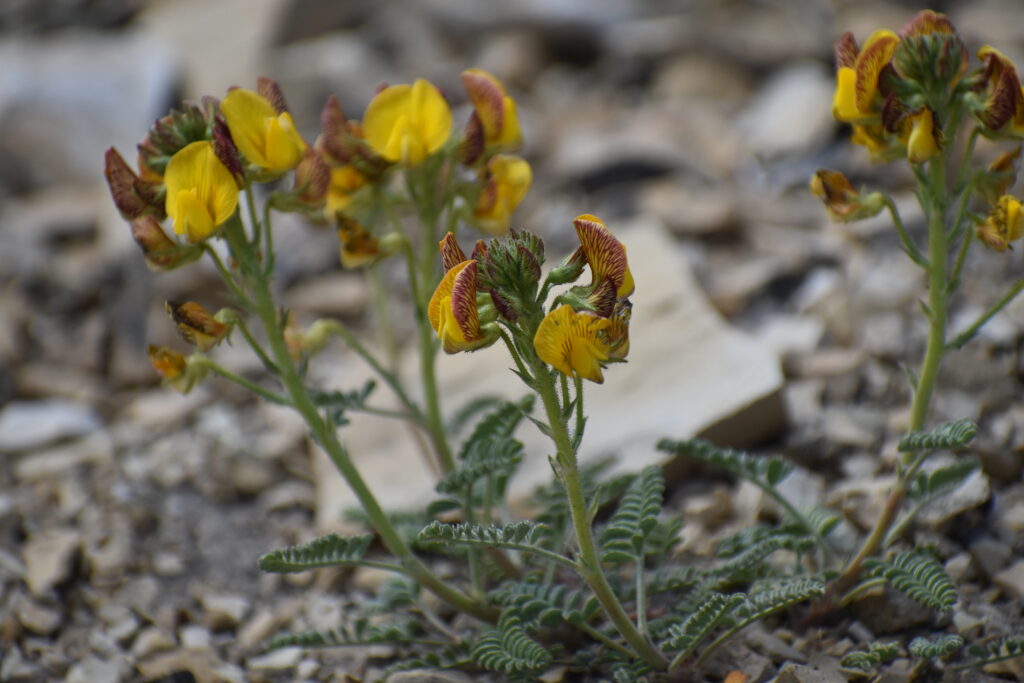
Before even getting to the fence, let alone the Senna a few hundred feet away, we were confronted with dozens of other wildflowers and flora of interest. The first of which was Sisyrinchium macrocarpum with flowers of golden yellow blossoming atop 6” tuff of iris like foliage growing in a sharp tan gravel.
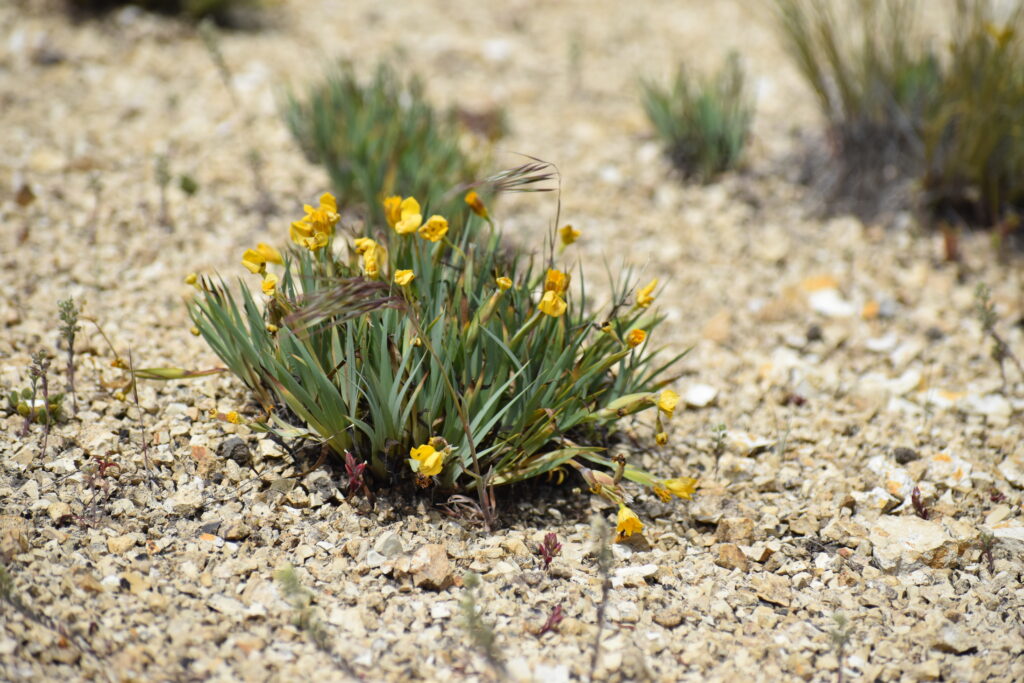
Also in the gravel, a small herbaceous Adesmia corymbosa which we first observed at our previous stop held its mustard yellow pea blossoms veined with burgundy on the reverse just inches over their delicate rosettes of pinnate blue green leaves. Yet another bloomer, Sanicula graveolens, with clear yellow florets just opening on top of brown/green scapes above pinnately lobed dark green foliage on the ground stood out from the tan stone mulch. These three interspersed with the clumps of the hair like Pappostipa humilis.
Approaching the fence, scrubby Berberis sheltered a few borage relatives. The first, Amsinckia calycina, with tiny orange/yellow stars held on unfurling hairy coils above strappy leaves with the same hairs. The second, Phacelia secunda, with splitting coils and near white stars with protruding stamens growing from a purplish flower stalk erupting from pinnate leaves all covered in minuscule hairs. Between all of this was the ubiquitous weed, Rumex acetosella, something you don’t expect in what seems like the middle of nowhere on the steppes of western Argentina, yet still there with wispy red inflorescence.
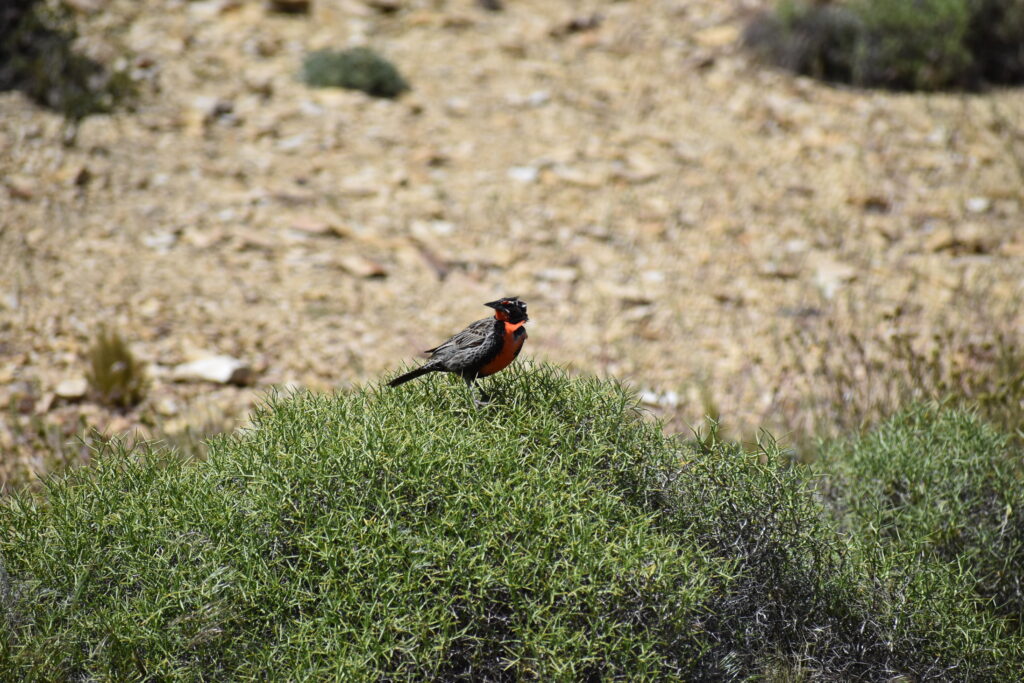
Finally making it over the fence, a trio of rams observed us from a safe distance silently watching the crazy humans dispersing over the hillside looking at all their least favorite foods. Getting close to the Senna, a Long-tailed Meadowlark, Leistes loyca, with rosy, red breast perched on a large prickly Azorella prolifera before flying away into the surrounding brush. That same brush was the home of the Senna. Bushes of Berberis microphylla and Azorella prolifera protected the Senna arnothiana from those eyeing rams earlier. This colony of Senna arnothiana grew larger than the typical 18” in this sheltered location reaching about 3’. The one-inch open-faced blossoms looked more like butterflies then like the typical pea like flowers of the Fabaceae. They grew close to the tight pinnate blue green leaves attached to the knobby grey stems.
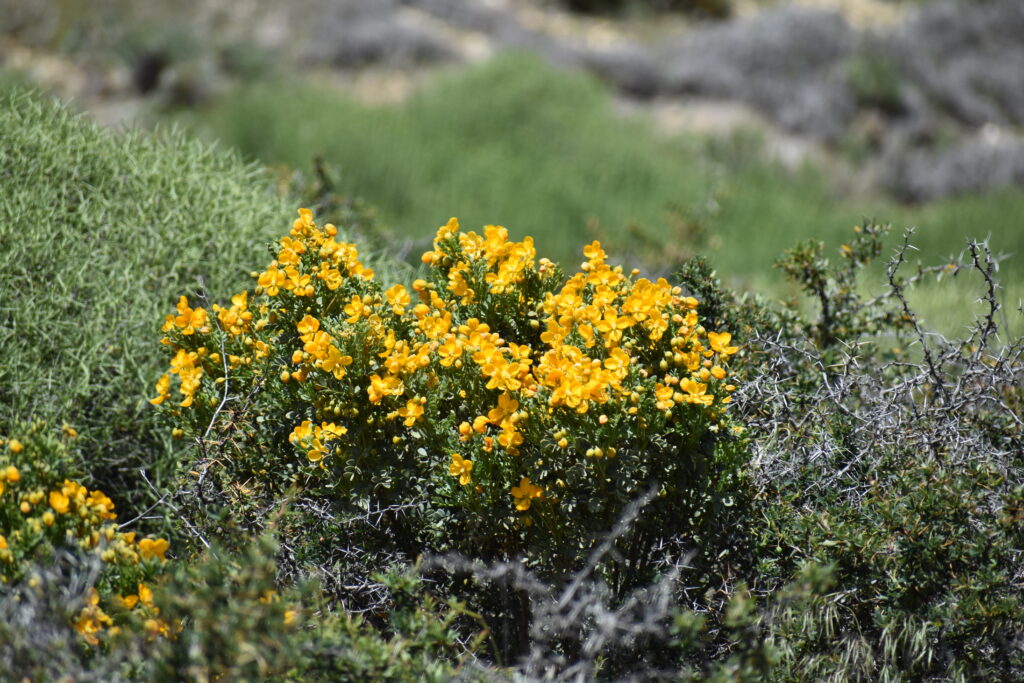
Having reached the first real target of the stop our attention moved to the other cool flora at this location. Ephedra chilensis popped up all over the place ranging from tight plants only a few inches to open shrubs a few feet tall. The blue green stems decorated with yellow green cones at the nodes. Continuing the hunt brought us to spiny clumps of Austrocactus coxii just days from flowering. Open bushes of Adesmia volckmanii covered in tiny clear green pinnate leaves attached to bisecting thorn tipped twigs also presented the first of the seasons ½” yellow pea flowers sporting a brown eyelash mark on the banner petals. Sprawling across the rocky ground a few, Astragalus palenae blossomed with white and lavender colored flowers that faded to a sky blue as they aged. Pea pods of yellowy green speckled with burgundy added to the display of this humble plant with grey green featherlike foliage.
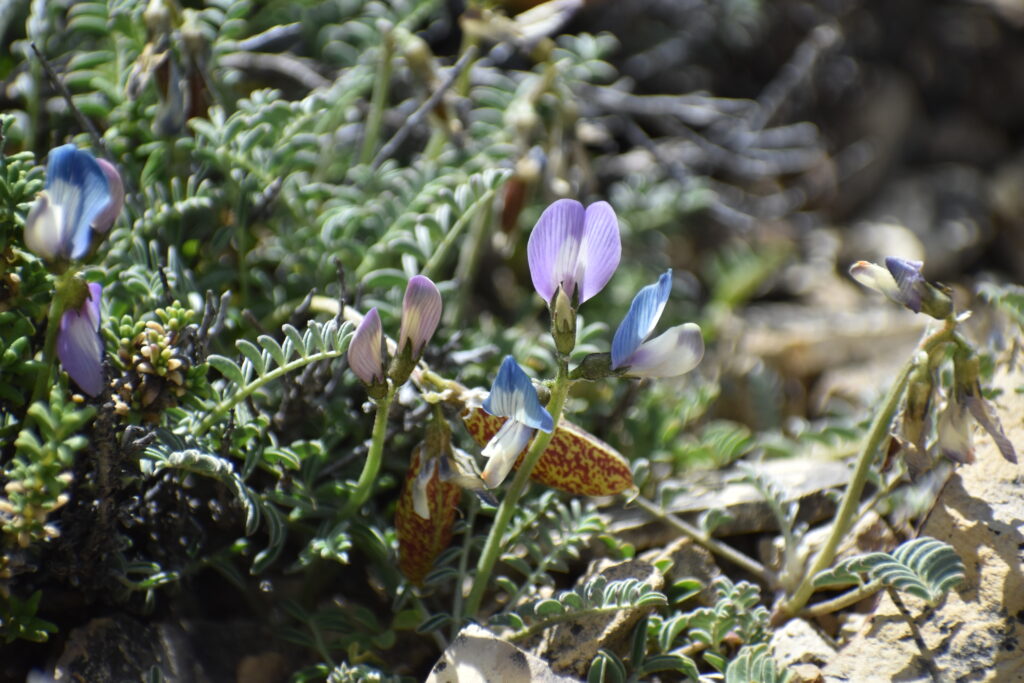
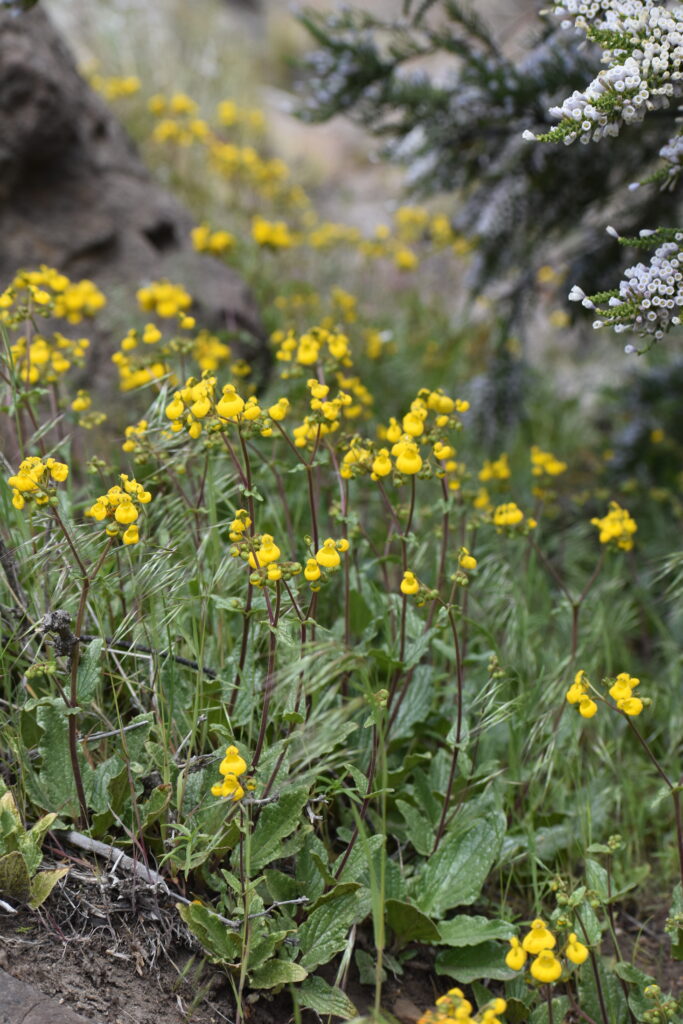
Hiding among rock outcrops and the bases of shrubs grew pocketbook plants, aka Calceolaria. Two species called this hillside habitat home. The large growing Calceolaria germainii sorting clustered of yellow pockets grew 1-2’ tall in sheltered locations while diminutive Calceolaria polyrrhiza formed carpets in 4-8” tall plants with flower stalks holding 1-3 florets in the windswept open. One of the shrubs sheltering them was a potato relative, Fabiana imbricata. White and pale purple flowered forms dotted the hillside decorating the heather like foliage.
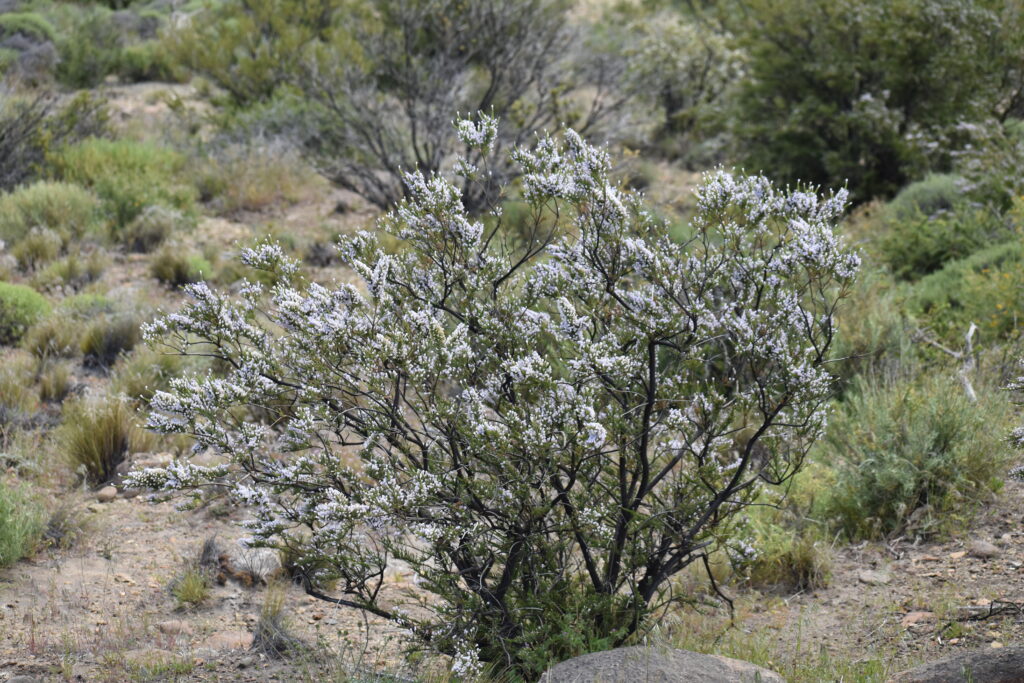
Azorella trifurcata, one of the smaller species, blossomed nestled at the base of some of the small boulders. The powdery yellow umbels of blossoms perched only inches above the tight mat of foliage. While further up the slope in a larger outcrop the larger shrublike plants of Azorella prolifera were already in blossom with their bright yellow blossoms opening over the prickly blue green foliage. They looked out over the Laguna Los Juncos dotted with the pink of Chilean flamingos where we would have our lunch later.
Further investigation introduced us to more sharp species of the hillside. One of the most spectacular in blossom that we were too late to see at this location but would see later that day was Anarthrophyllum strigulilpetalum. Only a few nearly spent flowers hinted of the flamboyant red orange and yellow colors atop this dome of prickly foliage. Sculptural shrublets of Nassauvia glomerulosa only just in bud hid the relations to the sunflower family but on close inspection one saw the spines that protected their stem. So much of the flora in this area either protected themselves with sharp appendages or camouflage them from any herbivores.
After lunch near the laguna our travels continued many miles and to at least six more locations, before returning to San Carlos de Bariloche for the night.
New members profiled: Peter Perez and Peter Repetti
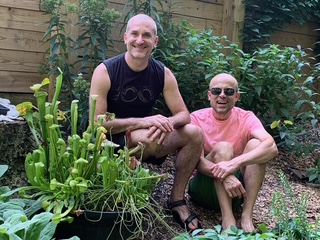
Amelia Lane shares their responses to our new member questionnaire:
1. Why did you join the Piedmont Chapter?
Our friend David White is responsible for making us familiar with, and encouraging us to join the Piedmont NARGS chapter. He and Carolyn have been enthusiastically helping us learn about gardening in the Piedmont since we moved here from California in the Summer of 2021. They’ve generously shared lots of local resources, a lifetime of gardening advice and so many plants from their garden.
2. What is a favorite plant and why?
Peter R: Since high school, orchids have been an interest of mine, but I’d only previously had the opportunity to grow tropical species as houseplants. One of the very first plants I bought for our NC garden in July of 2021 (from Plant Delights!) was Calanthe sieboldii, a Japanese terrestrial orchid. It was an exciting and perhaps risky splurge, especially since we didn’t yet really know anything about the yard. We got lucky with the site we chose for it, and while it didn’t produce any flowers in 2022, we had a single spike in 2023, three in 2024 – and 2025 looks to be better still.
Peter P: Like any good plant parent, I have trouble picking favorites. Right now, I’m loving a new fern that we added to our woodland late last fall: Neolepisorus fortunei, or Fortune’s Ribbon Fern. The bright and obvious sori add interest and color to the green ribbony fronds that have stayed vivid throughout their first (cold!) winter. A great addition from Garden Treasures.
3. Do you have a woody or herbaceous plant preference?
We go both ways, but woody plants are a more recent interest. In February of 2020, I (Peter R) worked as a shuttle driver on the International Dendrology Society’s tour on the Island of Hawai’i. One of the participants clarified their rather specific botanical interests: “If it is below the knee, we don’t care.” Since then, I’ve paid more attention to secondary growth, but we still love the spring ephemerals. The other Peter has always wanted a “grass garden,” but with all our shade, that dream is still somewhat deferred. Instead, we’ve gone all-in on Carex, and we are currently experimenting with 23 different species in the hopes that we can achieve a similar effect.
4. Something people would be interested to know about you or your garden
We moved to Durham after living in a gardenless Bay Area condo for 25 years – our plant fix was acquired on hikes, a brief stint in a community garden, and a windowsill of unusual house plants. Our yard here is long and narrow, a little over 0.5 acre, with no lawn. It is wooded (>120 mature mostly native trees on the lot) – so, we’ve got a lot of shade – but it also has a lot of topography with many slopes and curves, an ephemeral creek, a boggy area and two small areas that get a solid half day of sun. The previous owners gardened in several areas, but over the last 3.5 years, we’e greatly expanded the plantings, and removed an endless amount of invasive privet, wisteria and English ivy. We are gardening on the whole shebang, from the edge of the street, all the way to the back-back, half-a-football-field away. To date, over 2,500 new plants have gone in the ground, and we’ve only killed 247 so far. We have lots of southeast native plants, but being plant collectors at heart, we like the weird stuff too.
5. What would you like to learn about rock gardening?
Rock gardening is totally new to us both, so we are eager to learn more and experiment with new plants and ways of growing them.
6. Do you have a gardening challenge?
Shade, clay, slugs and rabbits/deer. We are relatively lucky that our yard is bounded by three busy streets, which keeps the animal pressure somewhat limited, but we still are learning which plants can tolerate a little browsing, which ones need protection at least initially, and which ones we just have to let go.
Featured Article
Darwin Day Lecture: Celebrating the Botany of Charles Darwin
By Scott Zona
Abraham Lincoln and Charles Darwin were both born on February 12, 1809. Both men became important figures on the world stage with legacies that continue to resonate today, but only one made significant contributions to the science of botany.
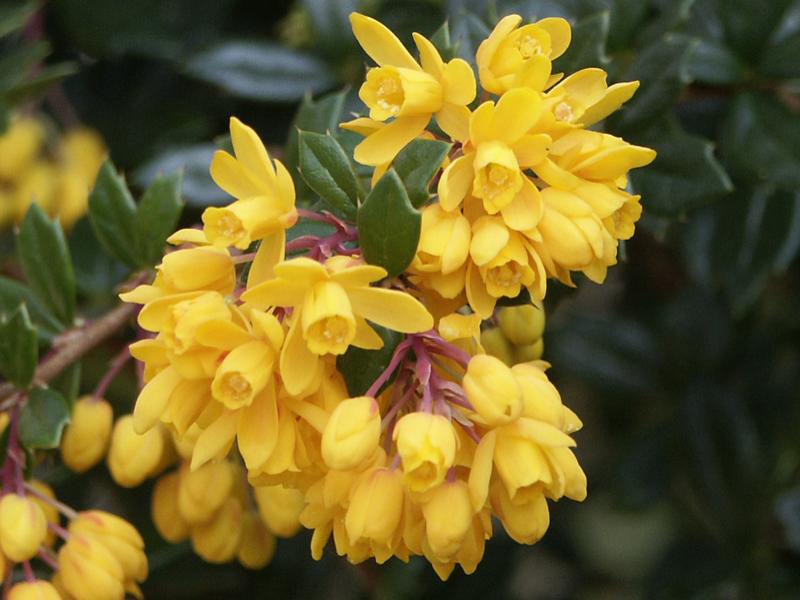
Charles Darwin is best known for his theory of evolution by natural selection, and this is surely his most important scientific contribution. After he wrote On the Origin of Species (1859), he moved to a country home in Down, England, where he took up botanical research. Of the ten books he wrote after Origin, seven were on botanical topics.
Darwin’s ever-curious mind contemplated how vines climbed, the ways orchids were pollinated, the diets of carnivorous plants, and the many ways in which plants moved.
In all of these fields, he used his power of observation, combined with the theory of natural selection, to explain the ways in which plants lived. Darwin made most of his observations on plants that he grew in his garden and greenhouse.
Please join us on Saturday, February 8, for a Darwin Day celebration of the botanical works of Charles Darwin.
NARGS News
Itching to get gardening, but it’s just too cold out there? NARGS Board member Carol Eichler lives in upstate New York, and she has some ideas for you:
As a gardener I’m trying not to get the winter doldrums. The longer days, at least psychologically, make me feel better – we’re on the upswing. If only I could keep gardening!
The frequent advice given is that now is the time to plan this year’s garden. Unfortunately this doesn’t work for me. A garden planner I’m not except unless it involves traveling to visit gardens. So I’m very excited to incorporate the 2025 AGM in Cheyenne Wyoming “Peaks and Prairies” on June 12-16, 2025 into my plant budget. I really enjoy visiting places that are very different from mine and the xeric landscape of the west certainly qualifies. I learn so much and salivate over the plants that may be common there but can seem so unusual and probably challenging for me to grow. Like penstemons for example. Both the Winter Quarterly and the NARGS website has detailed information about the Cheyenne meeting and I am counting the days until Feb. 3 when registration opens. As an incentive, if you have never attended a NARGS AGM, you can apply for a stipend from National (via your local Chapter Chair) that covers your registration fee.
Back to the subject of garden planning. I’m more of an impulse gardener than a planner which just makes me feel like a “not very good gardener.” So at least I’ve vowed this year to organize my garden records (dare I call it a New Year’s resolution?). First on the list is to update the spreadsheet of the plants in my garden – very out-of-date. That includes consolidating my seedling list, also in a spreadsheet, often created in haste, as I try to track germination and transplant dates. Frankly, it’s become quite a hodge-podge. I know some of those plants have “graduated” from pots and nursery bed to the real world while others have perished. I try to do a fall inventory but that doesn’t always make the spreadsheet.
Second, I need to organize my seed records, also in a spreadsheet. Fortunately, I can review my past NARGS seed orders (since 2022-23 at least) from the “My Account” page, both 1st and 2nd choices, though the records don’t show which species I received. It’s a start anyway and could actually help me build a wish list. That brings me to a third step, which is to create a wish list. A note to me: this should be on-going year-round.
Fourth, label, label, label. I now possess a label maker and weather-proof stick markers. I got a good start on this last fall so the spring will be a test to see how well my technique is working. Look for an article on labeling ideas next month. I’m not an expert so I welcome others’ ideas too. Lastly, I want to use Steps 1-4 to refresh my Latin, which seems to fade with my age.
I think that’s quite enough for resolutions and a winter project! Will it come to fruition? Let’s hope so. Stating and sharing these goals in writing may be the boost I need to follow through. Otherwise, guess what my 2026 resolutions will be?
November 2024 – Photo Special
Member Kyle Sonnenberg recently traveled to the UK and visited RHS Wisley and several other gardens of interest to rock gardeners. Here are some photos from his trip. Thanks for sharing Kyle!

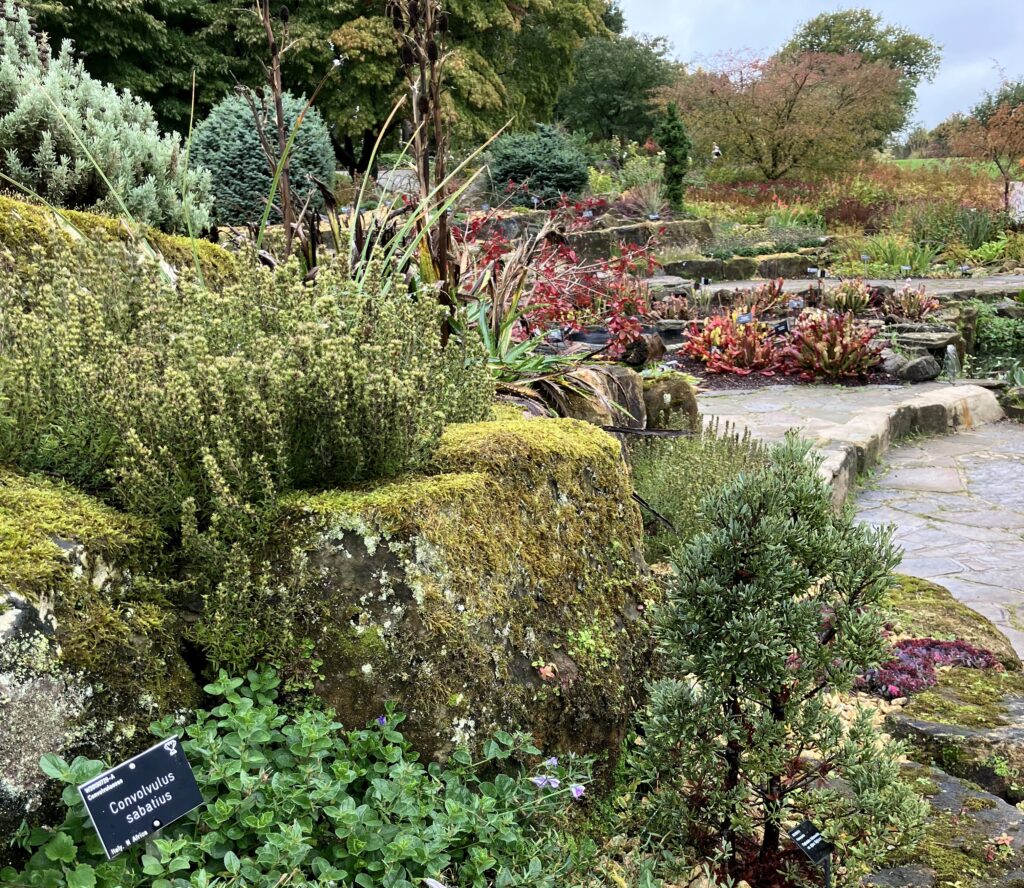




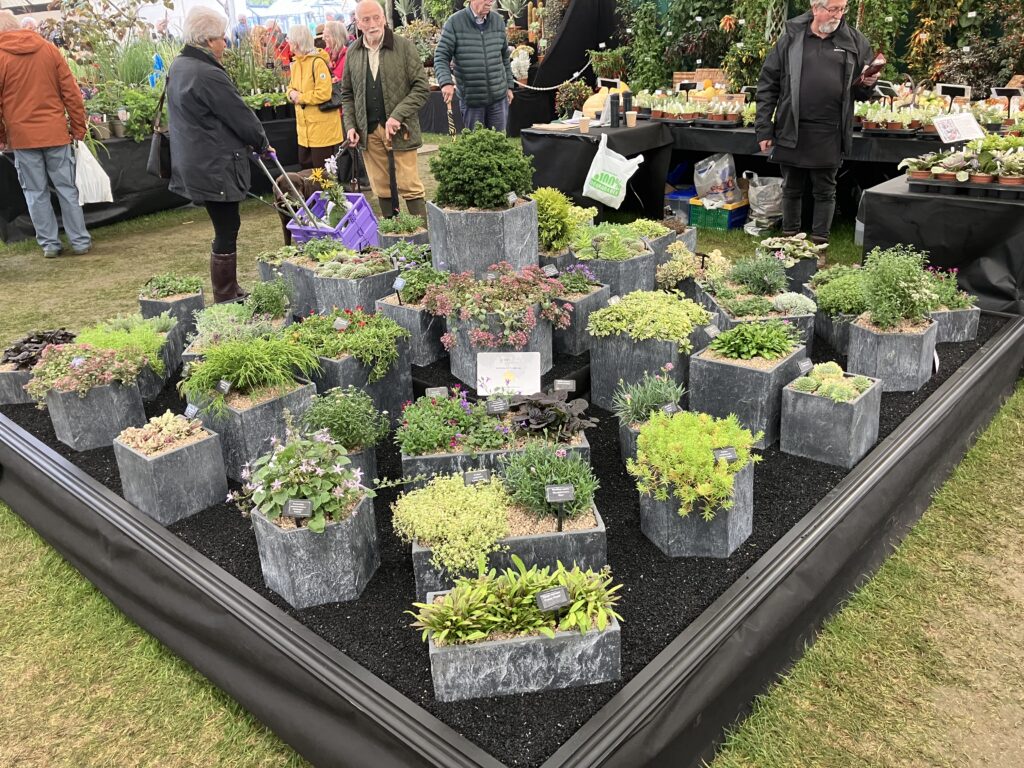
Alpine display at Malvern Autumn Show by Skerne Alpines
October 2024
Featured Article
The Cradle of Southern US Horticulture in
My Grandmother’s Backyard in China
by Jerry Yu
Heraclitus once said, “No man ever steps in the same river twice”, and the same can be said for countries, homes, and ourselves. The last time I visited China, I was a starry eyed tween without a JLBG t-shirt or even a phone, and before, a toddler. Now, after the ebb of COVID, our family was about to go on our long awaited China trip. We would visit family, return to the places me and my family had grown up, and finally enjoy good Chinese food. I had my field guide, I had Inaturalist. I was ready.
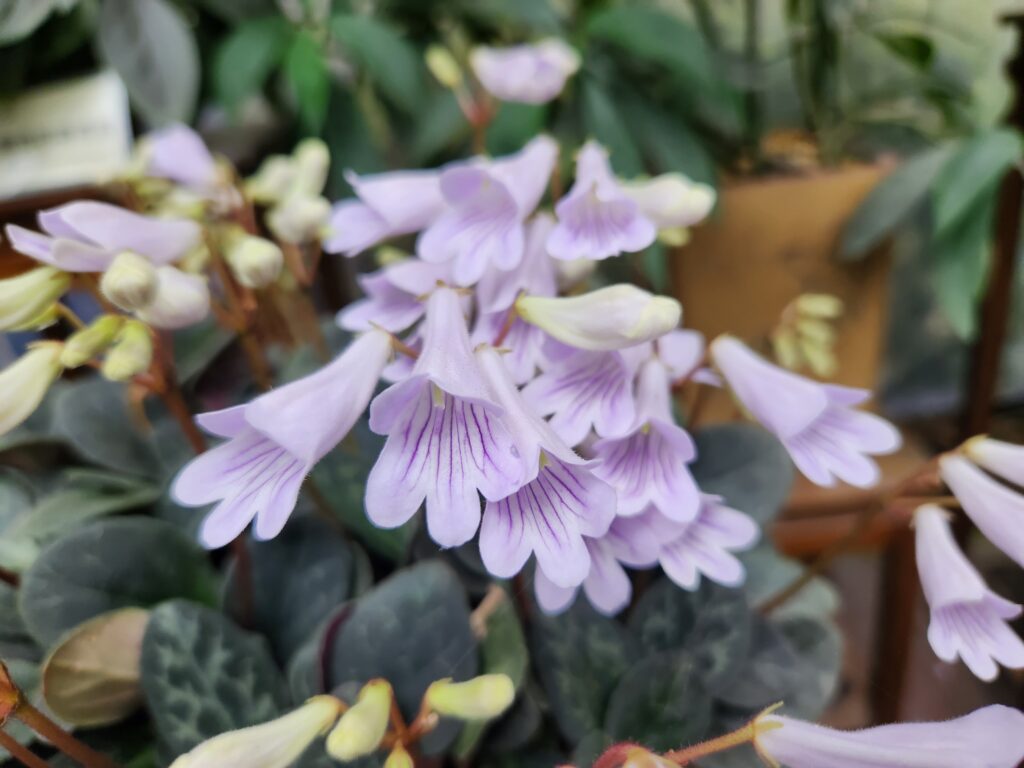
Shenzhen (深圳)
I always marveled at the serendipity of my birthplace, the sprawling high tech metropolis carved out of rolling, lychee filled hills. Here, wide boulevards and hiking trails overfilled with bayan and palm seek to soften the jagged rise of glass towers, their cold glint softened with reflections of bougainvillea. Here, I was exposed to the best of tropical landscaping, and excitedly snapped pictures of various flora while driving around town with childhood friends. Of special prominence here were the various tropical mangrove species (Sonneratia sp.), Lagerstroemia speciosa, and Fagraea ceilanica, which perfumed the air around many malls. I also had the chance to visit the Xianhu (仙湖) botanical gardens, where I was able to see their Cycad and Gesneriad collections.
Hunnan (桃江,张家界)
This province is the ancestral home (“老家”) of my family, and where my grandparents still live and lease land. The last time I had visited here was when I was four, and all I remembered from that time was my bruised head, I wonder why. This leg of the trip thus proved the most exciting. Walking into my grandparents’ backyard was walking through a funhouse mirror of my Mom’s memories and Lowes. What a bizarre situation to travel across the world, only to be able to identify about as many plants as I could here! Growing wild were various species of Camelia, Loropetalum, Buxus, and Gardenia, which my grandmother picked for our dinner. With canopy of Cunninghamia replacing our loblolly though, it was a slightly more hazardous trek. Later, our family took our grandparents to see the legendary Zhangjiajie (张家界), whose karst landscape has graced innumerable ink brush paintings and James Cameron’s Avatar. Here, among the giant salamanders I saw many species of Arisaema, Begonia, and violet, as well as some truly impressive divided leaf Heptapleurum delavayi.
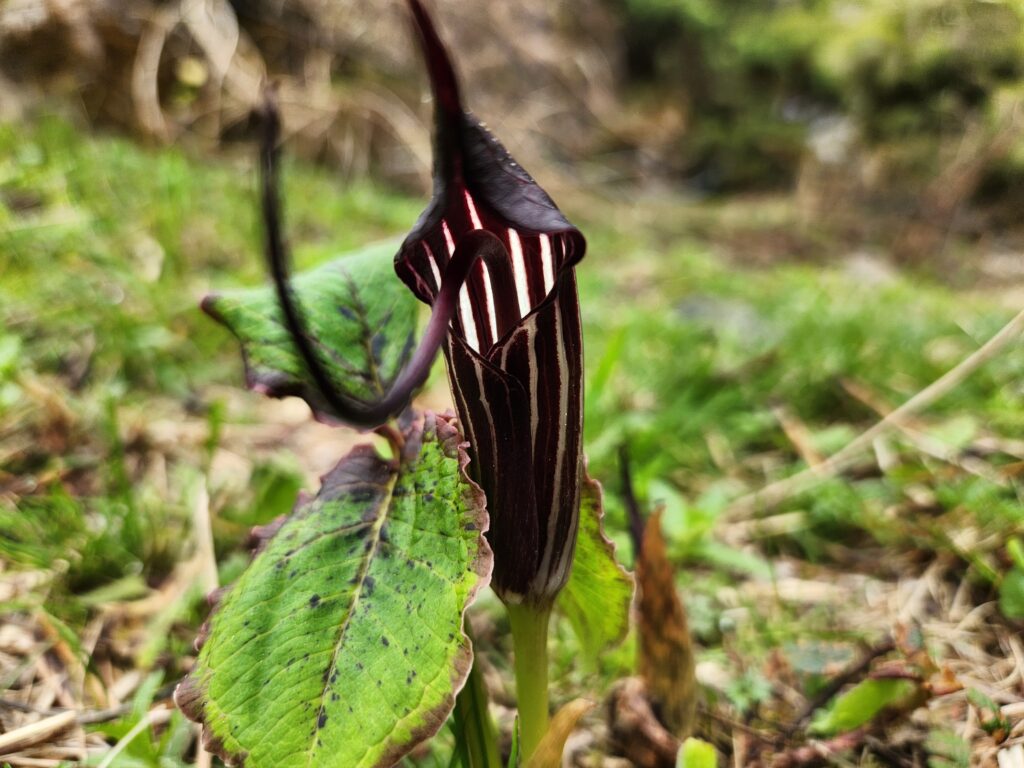
Yunnan (轿子雪山)
While this trip was primarily to visit friends and family, I made sure to take the trek to Yunnan. I had to. It’s Yunnan. Yunnan is similar to Ecuador: the cut flower capital of China, and home to a new plant community every 10 minutes or 100 meter elevation change. And I am glad to say that I got the Yunnan experience visiting Jiaozi Xueshan (轿子雪山), home to over 40 species of Rhododendron. And they were out in force! Whether it was the carmine red of Rhododendron delavayi, the creamy yellow of Rhododendron lacteum, or the tiny purple blooms of Rhododendron fastigiatum, we definitely received a dazzling show. While my dad climbed the mountain’s peak, I puttered around observing the emergence of various species of Potentilla, Oxygraphis, and Primula. And you can’t forget the black and white jail bar flowers of Arisaema aff. speciosum!
Returning to China drove home just how many of our most valued Southern plants grow wild in Hunnan’s hills. Hopeful immigrants, made good, thriving in the Carolina clay. May we strive then, in our gardens and in our lives, to grow with change, and remember that home is not one place.
Plant Profile
by Amelia Lane
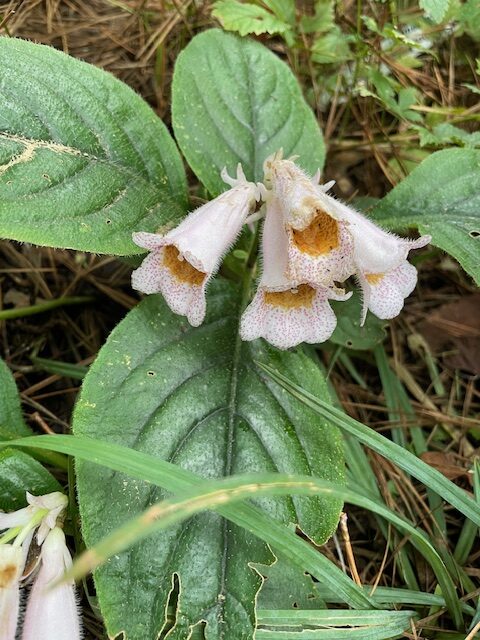
Refreshment Rota
Bring goodies to share!
September, last names A-C
October D-F, November G-H
January J-L, February M-P
March R-S, April T-Z
Lasting Impressions’ Garage Gallery & Plant Sale
Saturday, October 26, 2024
10am-2pm
4904 Hermitage Dr., Raleigh, NC 27612
Please join us for our Fall sale, 20% off hypertufa troughs and concrete leaves. There will be plenty of plants too, just in time for fall planting. We hope you can come and enjoy the garden.
The August 3, 2024 Board Meeting Minutes, including Financial and Program Reports, submitted by Char Thomann, Secretary, are available at the link: NARGS minutes 8-3-2024
Chapter members are invited to submit articles, book reviews and photos for online publication to Cyndy Cromwell – find my email on the Members Only page. Travel, gardening techniques and stories, plant profiles and book reviews are some of the topics you might cover. Thanks for your contributions!

September 2024
Featured Article
Hidden Gems of the Southern Blue Ridge Escarpment
by Ryan Schiller
The Southern Blue Ridge Escarpment Region is an area of dramatic elevation drop that straddles the South Carolina/North Carolina border up into Western North Carolina. Typically, the Blue Ridge Escarpment is a North to South orientation but, in this region that changes to a more west to east orientation. Because of this orientation, it allows for significant orographic lift on and around the escarpment. Moisture lifts out of the Gulf Of Mexico and seemingly “piles up” in areas on and around the escarpment. One such example is Lake Toxaway, NC, which averages a whopping 91 inches of rain a year, according to the Greenville National Weather Service! This abundant moisture is coupled with mild winter temperatures especially in microclimates such as Rock Houses and Spray Cliffs. Other factors that contribute to the diversity of the region are the varying topographic features and their underlying geology. From deep humid gorges with towering Hemlocks, dramatic cliffs, and exposed rock faces, an astounding array of plant communities can be found!

There are many plant communities within the Southern Blue Ridge Escarpment that contribute to the region’s diversity. Here, I’ll spend a little bit describing a few of the many notable communities.
Cataract Fens are one the natural communities that often gets mentioned when one thinks of the Southern Blue Ridge Escarpment. Often these Cataract Fens are referred to as bogs which is incorrect. A true bog by definition has most of its nutrients and water derived from precipitation. This is known as an ombrotrophic wetland. On the other hand, fens receive their nutrients and water from seepage. To add further classification, fens can be “rich” and “poor. “Rich” fens are exactly what you’d think. They are rich in mineral content and tend to be more basic than “Poor Fens” which have a lower mineral content. In both examples, water is found sliding down smooth open rock outcrops creating a water slick, of sorts. The most iconic plants of these communities are Sarracenia jonesii (Mountain Sweet Pitcherplant) and Sarracenia purpurea var. montana (Southern Appalachian Purple Pitcherplant). Other notable species found include, Pogonia ophioglossoides (Small Spreading Pogonia), Parnassia grandifolia (Bigleaf Grass-Of-Parnassus), Fothergilla major (Mountain Witch-Alder), Eriocaulon texense (Texas Hatpins), Drosera brevifolia (Dwarf Sundew), and many more. Because of the unique conditions present, remarkably disjunct populations are present, including the latter two species.
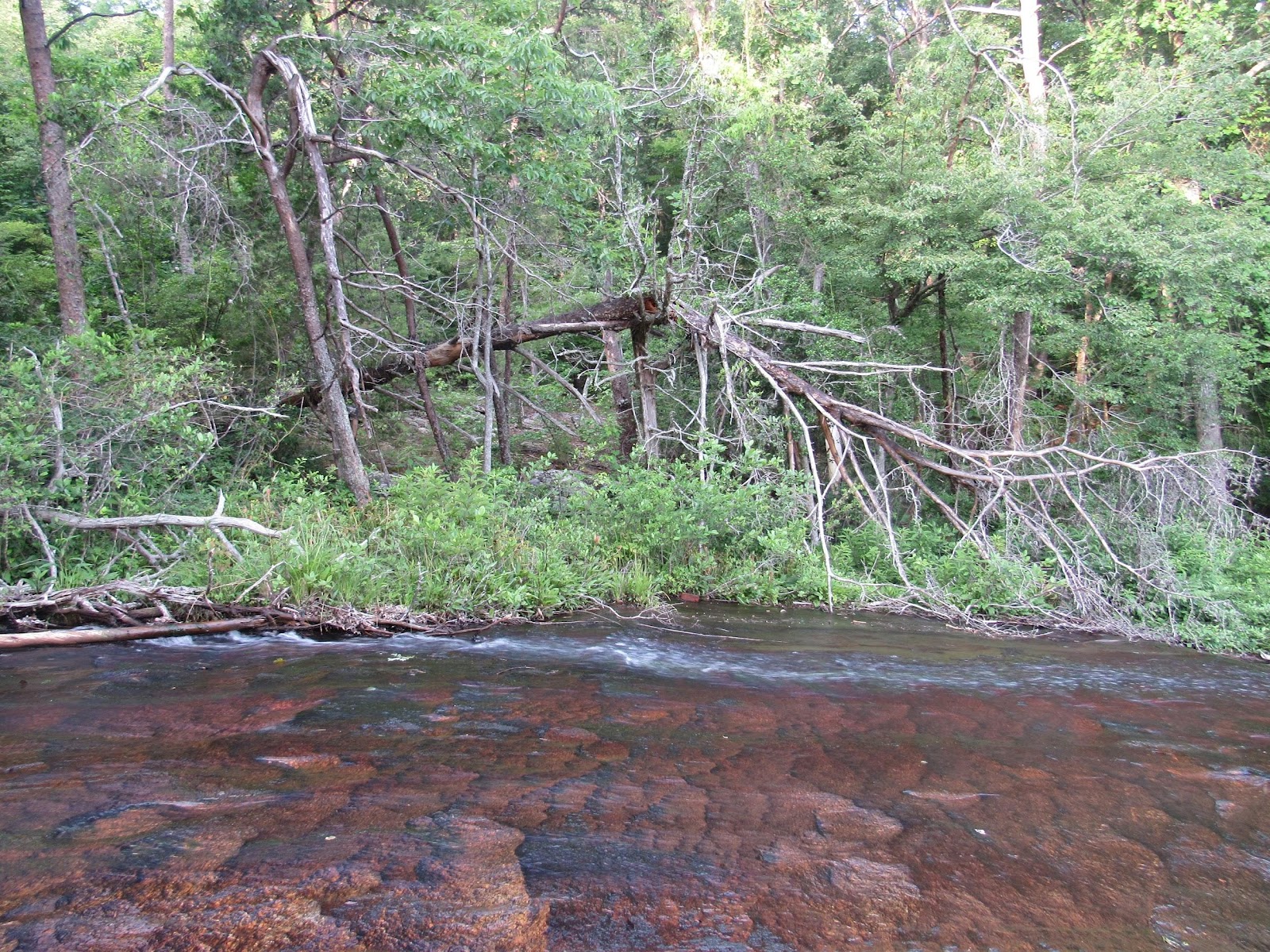
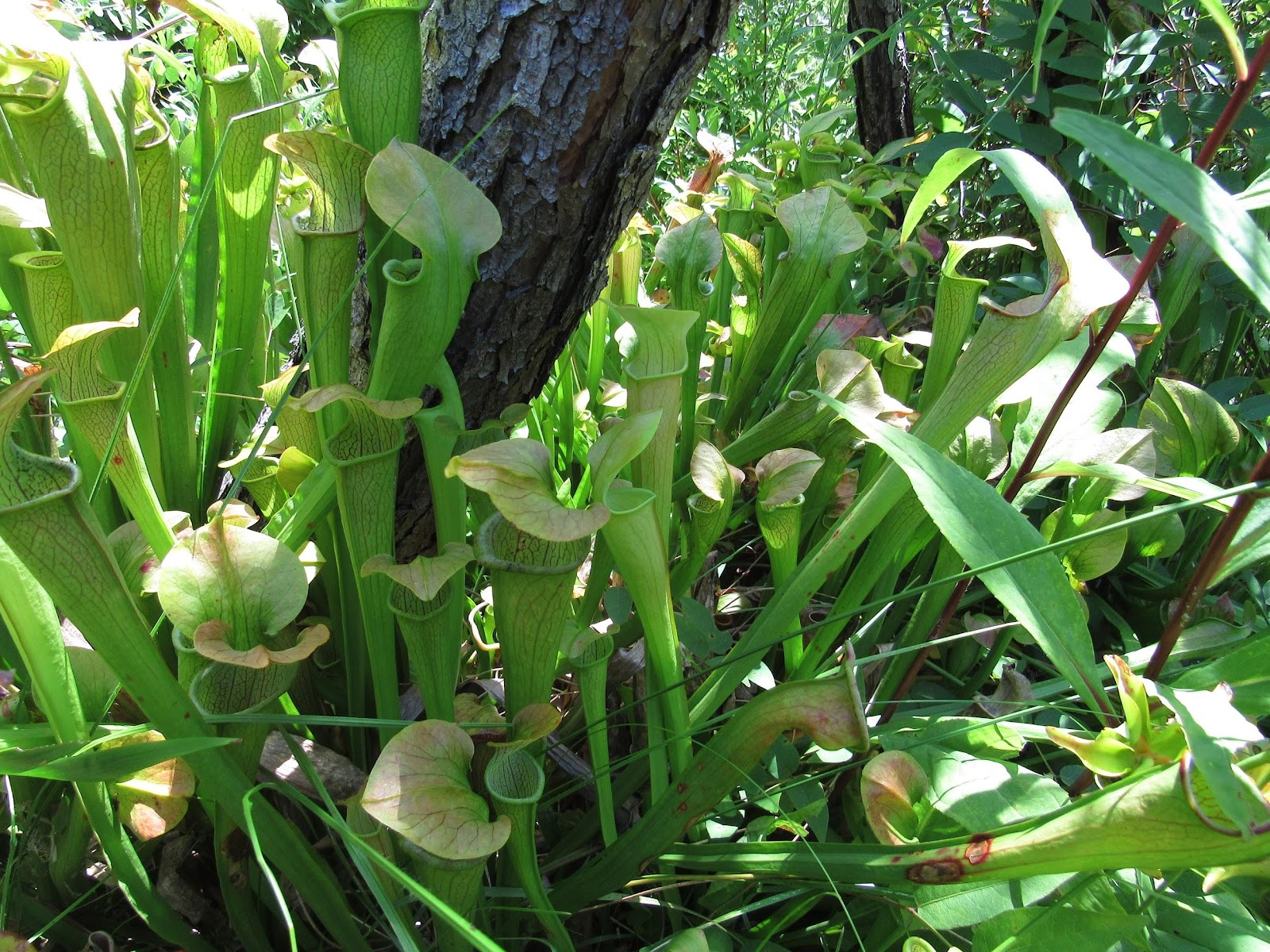

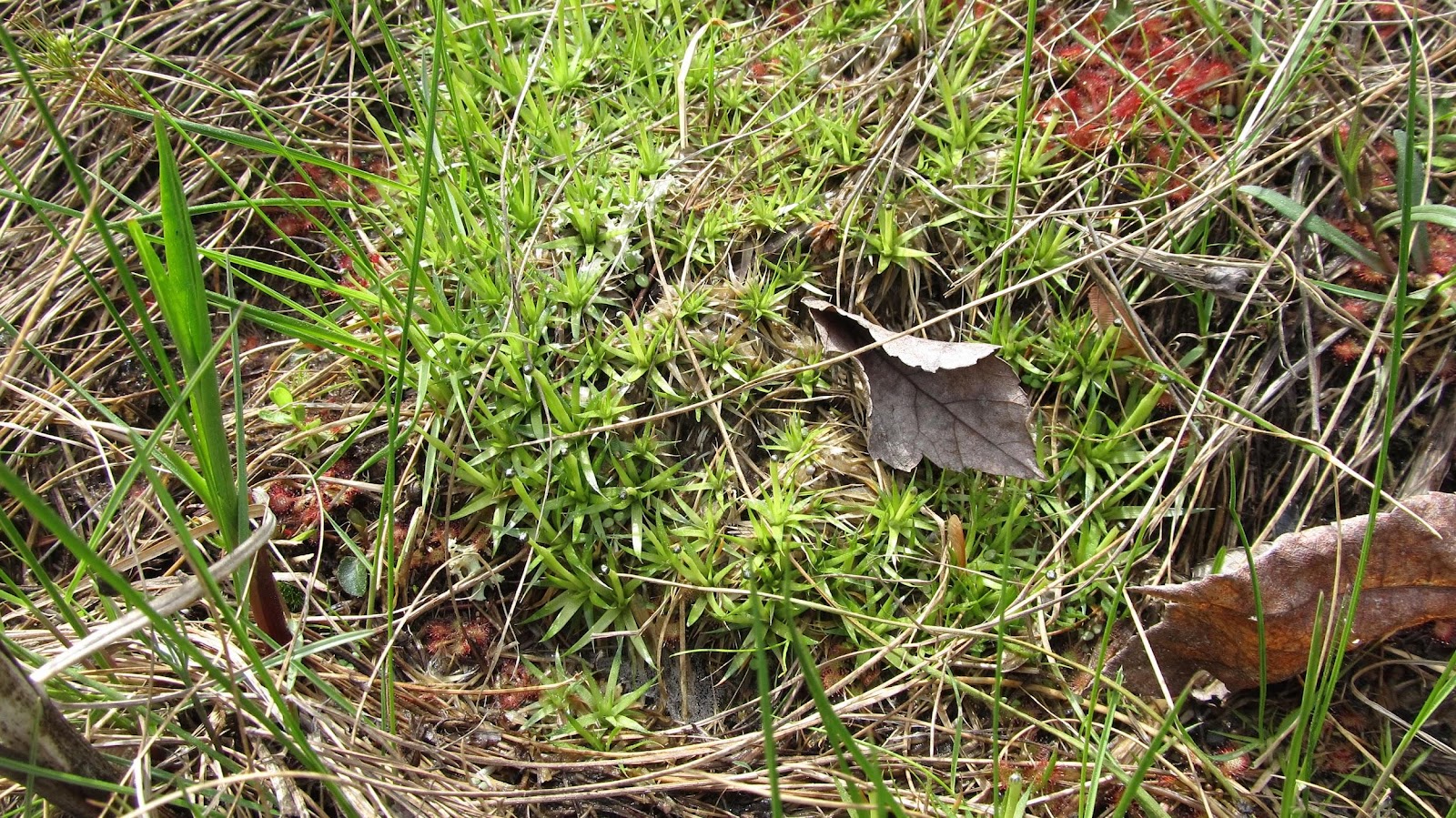
Another community that cannot go without mention when speaking of the Southern Blue Ridge Escarpment are the various types of rock outcrops. These rock outcrops are smoothed exposures of varying geology. Rock exposures made of granite gneiss tend to be more acidic. Mafic rock outcrops where amphibolite is found are high in magnesium in calcium.
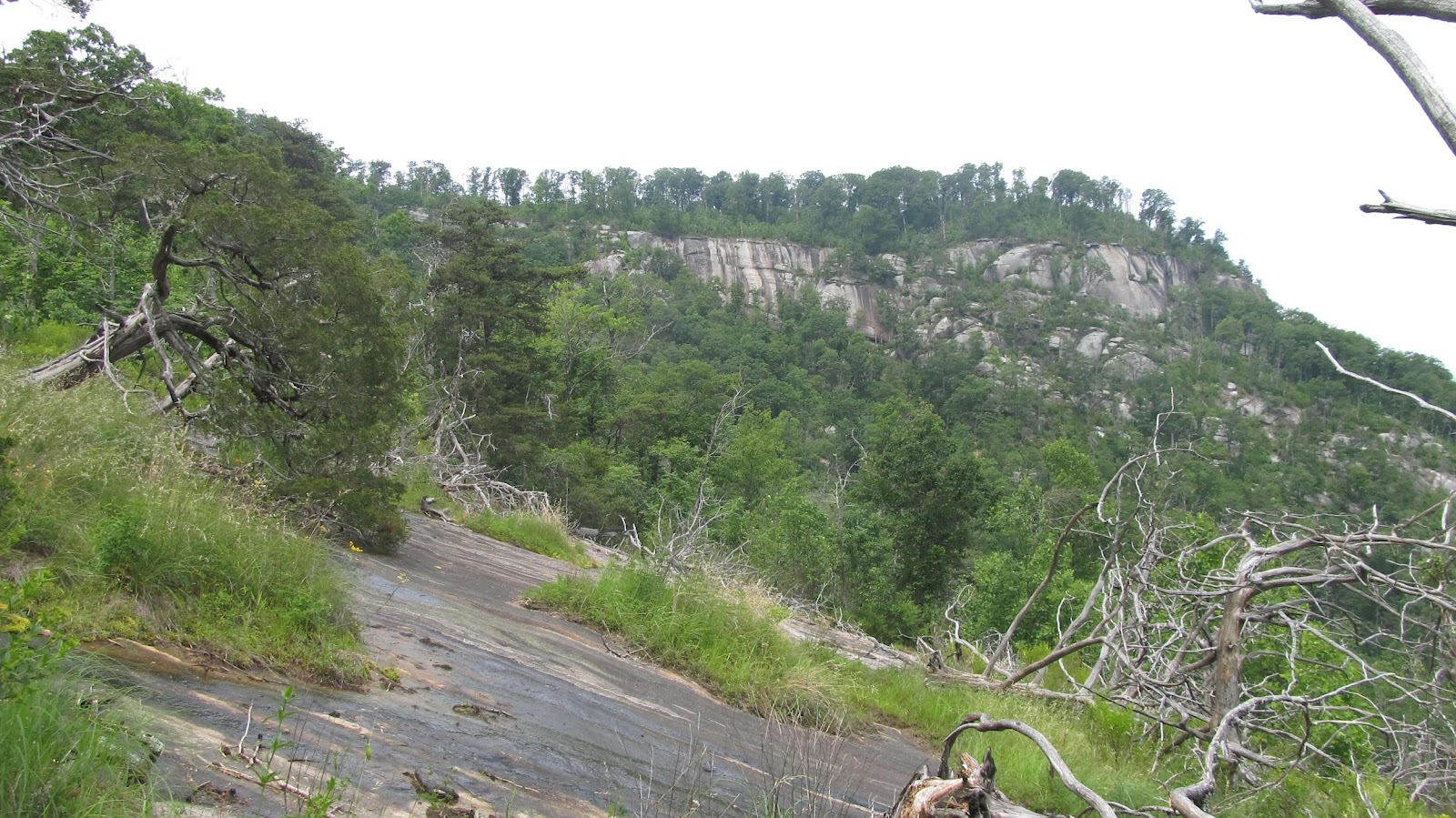
Species like Carex biltmoreana (Biltmore’s Sedge) and Sisyrinchium dichotomum (White Irisette) can only be found on these mafic outcrops. Typical plant species one may see on these outcrops include Bryodesma tortipilium (Twisted-hair Spikemoss), Hypericum gentianoides (Pineweed), Myriopteris tomentosa (Wooly Lip-fern), Myriopteris lanosa (Hairy Lip-fern), and many more.
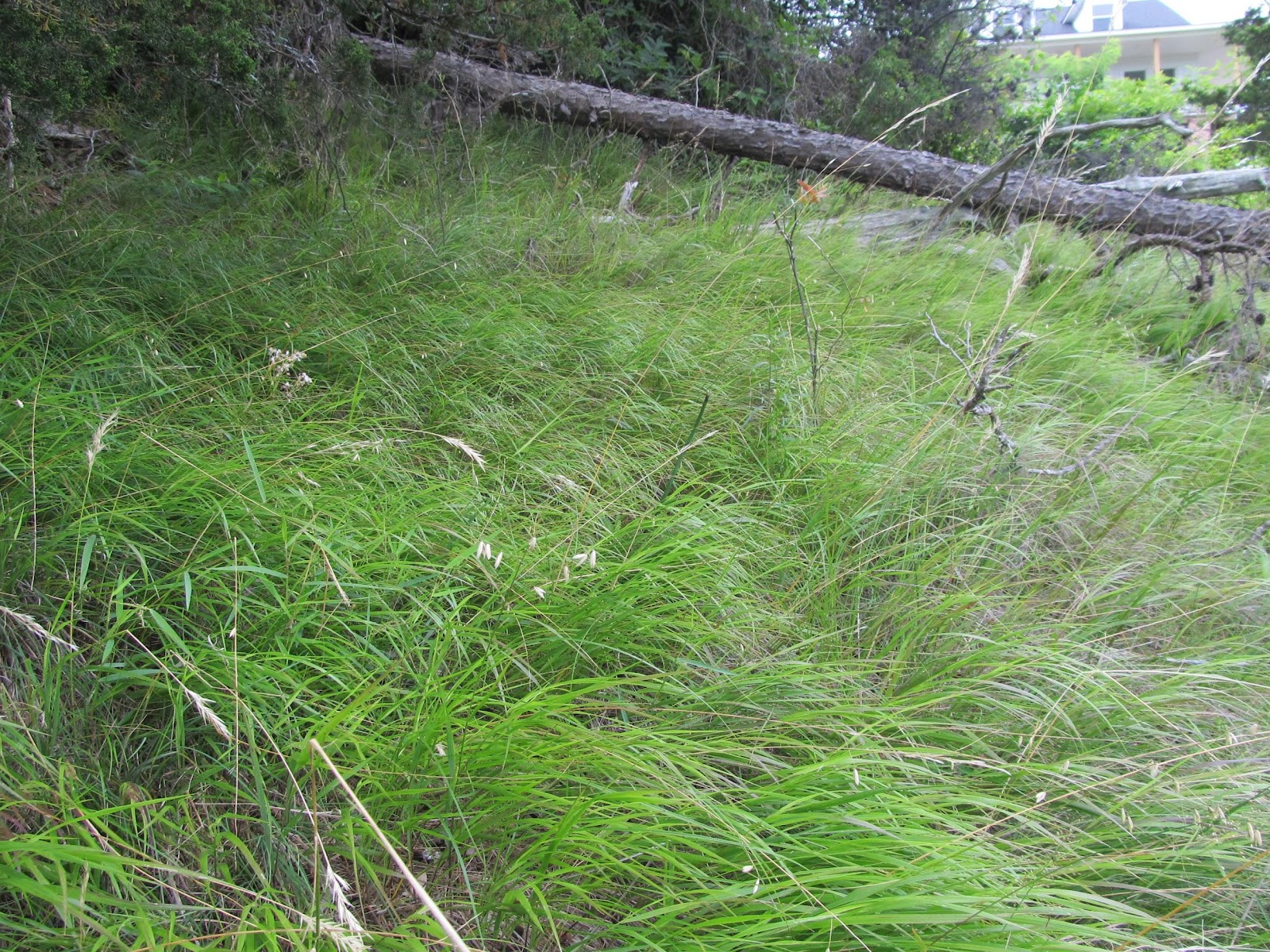
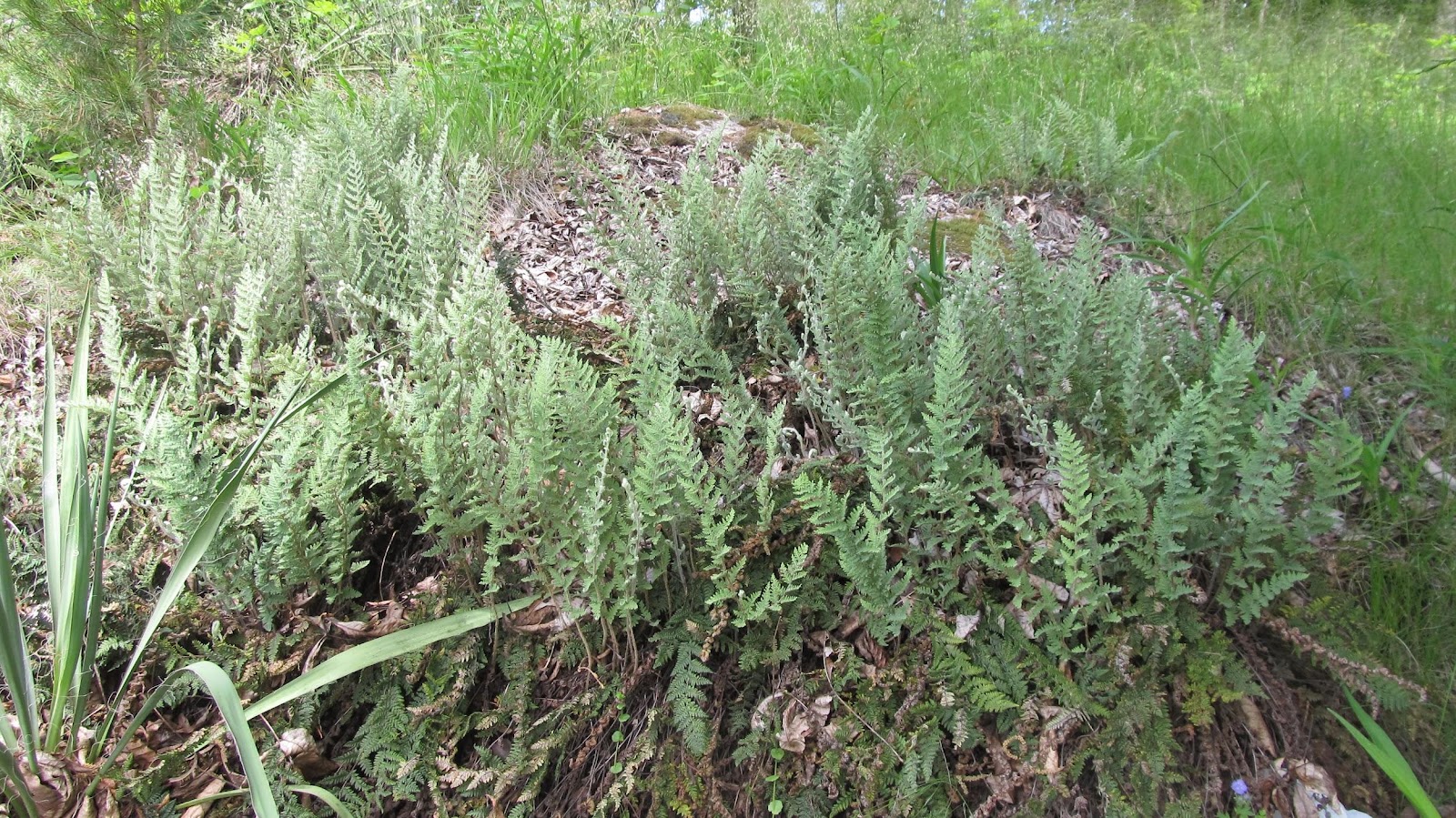

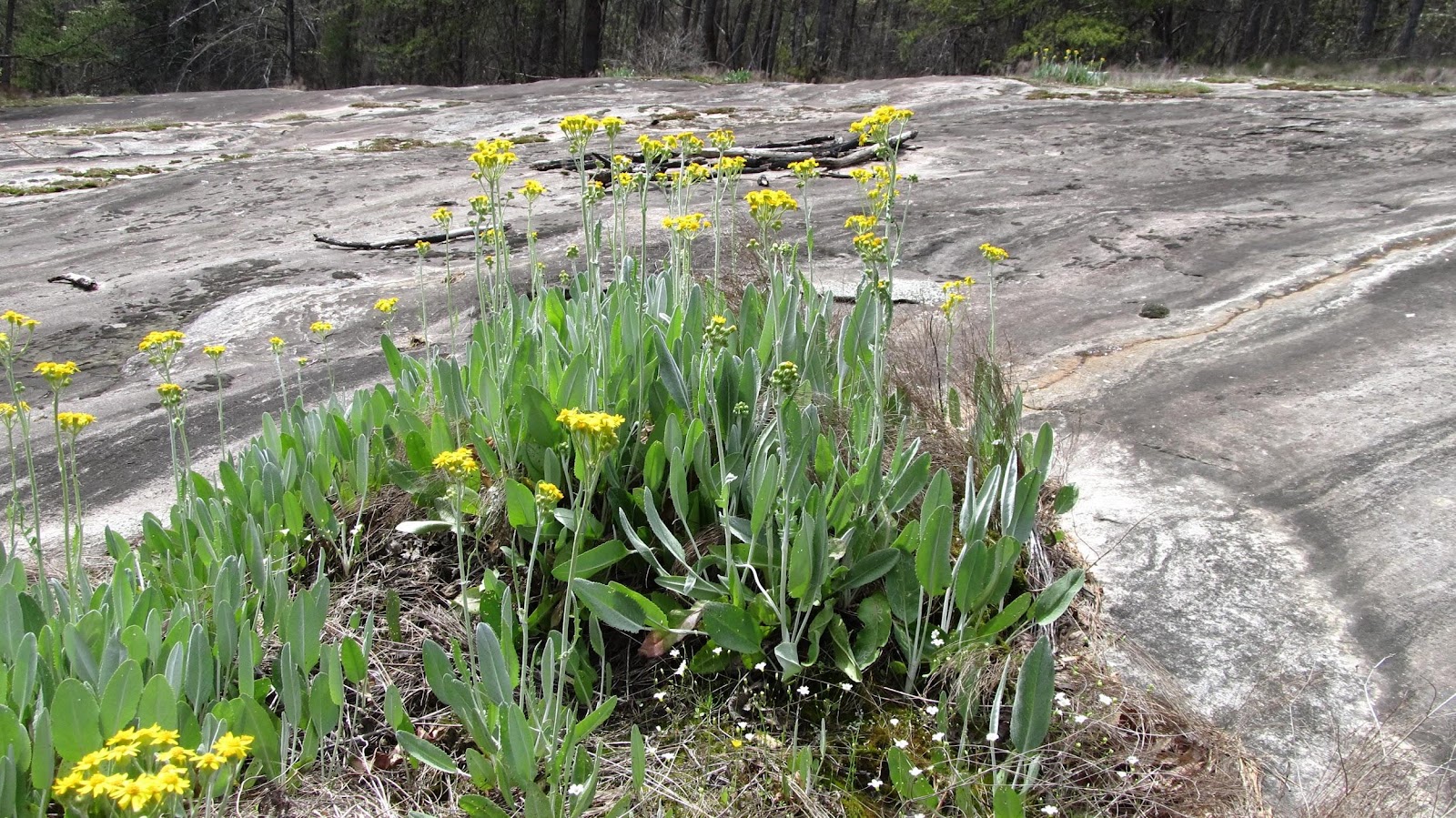
Without a doubt most people’s favorite plant community is the Rich cove. Typically coves in the region are north to northeast facing, generally have a stream running down the middle, pH <6.0, associated with Amphibolite, and are extremely diverse.
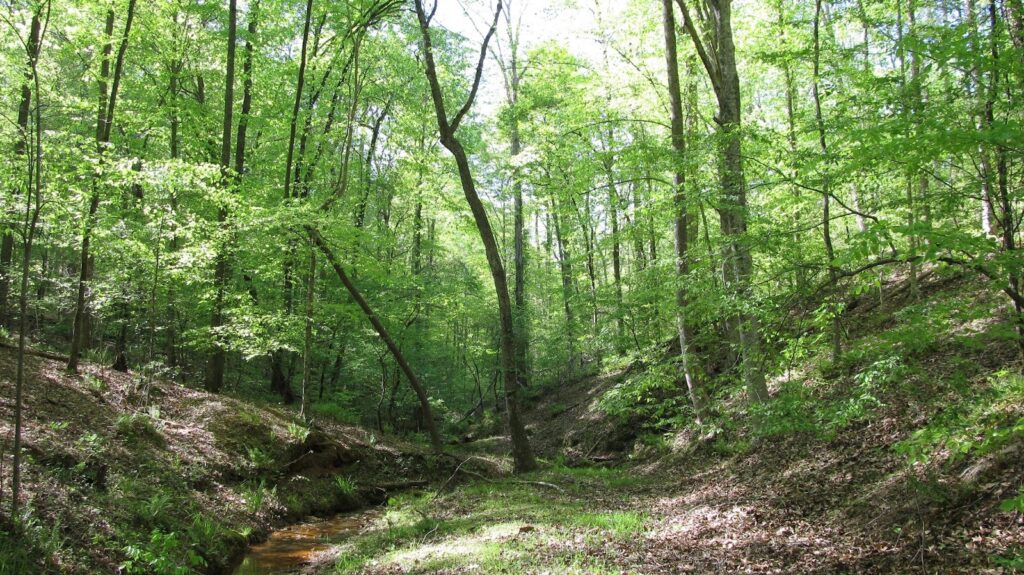
On one mountain in Pickens County, SC, an astonishing seven species of Trillium spp. can be found all under a canopy of mature Cladrastis kentukea (Yellowwood), ancient Liriodendron tulipifera (Tuliptree), and many other woody species. The Carex spp. (Sedge) diversity is also absurd. Twenty species of Carex spp. can be found in one Rich cove area in Oconee Co. SC. Species like Carex austrocaroliniana (South Carolina Sedge) and Carex radfordii (Radford’s Sedge) are endemic to the Southern Blue Ridge Escarpment.
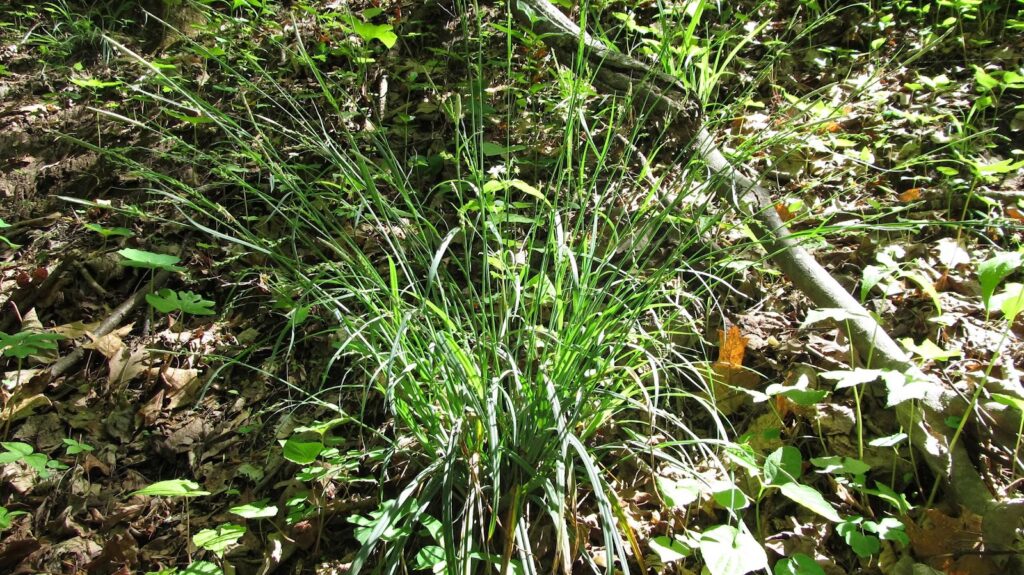
Trillium spp. such as Trillium discolor (Pale Yellow Trillium), Trillium vaseyi (Vasey’s Trillium), Trillium simile (Sweet White Trillium), and a few more carpet the cove floors with their dazzling ephemeral displays.
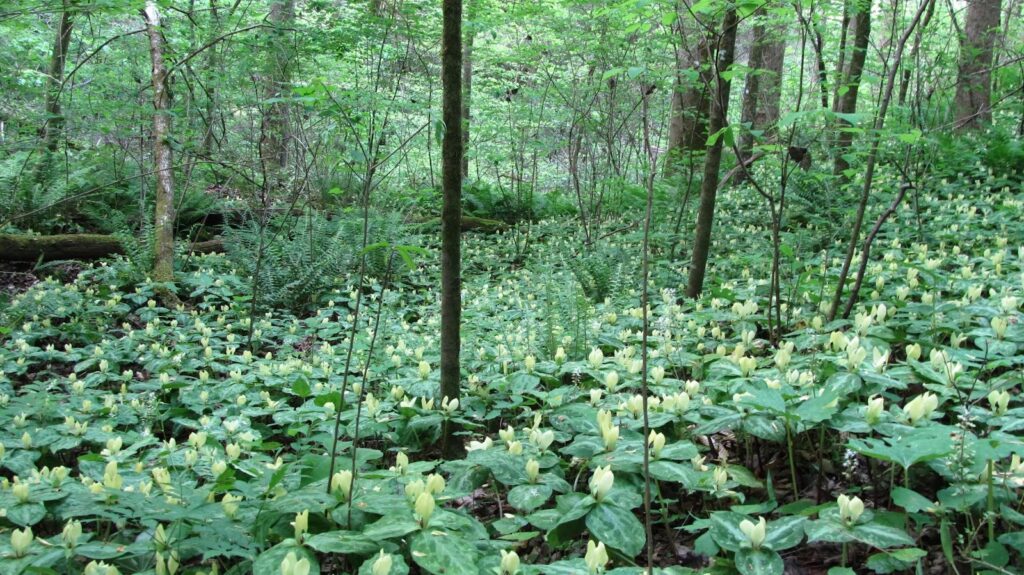

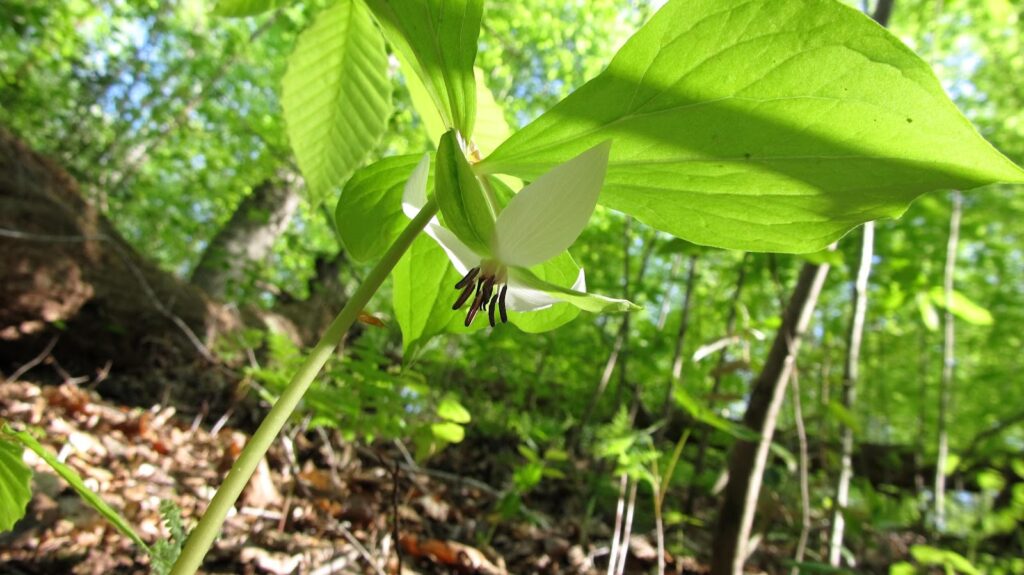
Ferns such as Diplaziopsis pycnocarpa (Glade Fern), Asplenium rhizophyllum (Walking Fern), etc, can be found with great abundance in some coves.
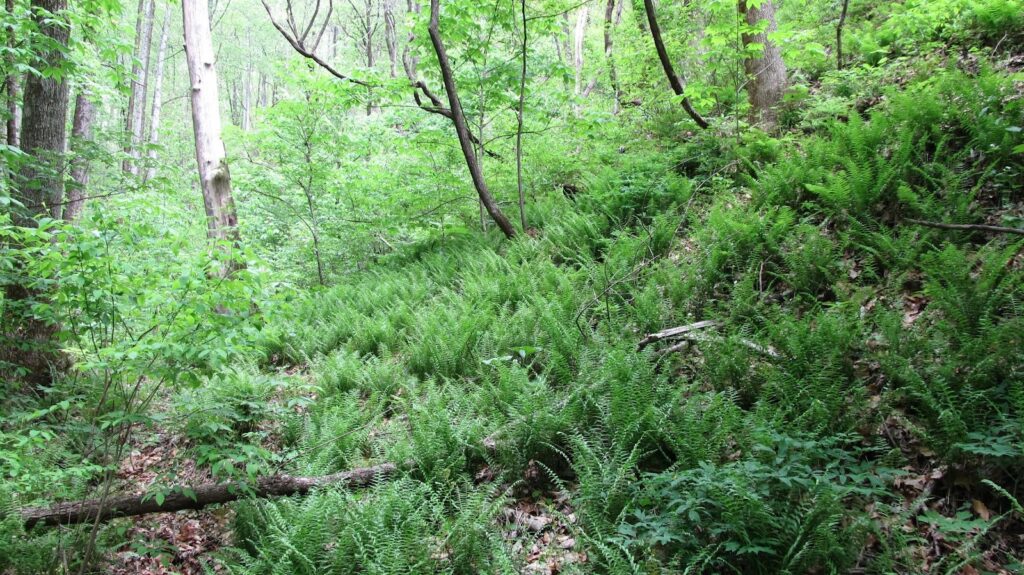
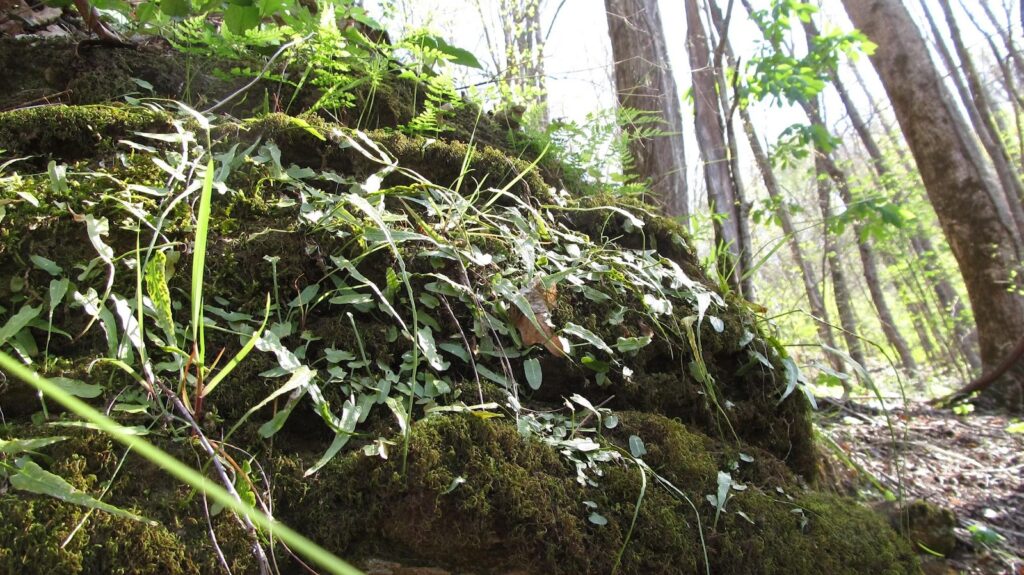
I hope you enjoyed a very short sampling of the diversity that can be found in this one of a kind region. There are many more plants and communities to be shown! If you want to further indulge and learn more about this fascinating region, join me at the J.C. Raulston Arboretum on Saturday, September 21, at 10 A.M.
Book Review Corner
Bobby Ward Reviews
The Tree Collectors: Tales of Arboreal Obsession
by Amy Stewart
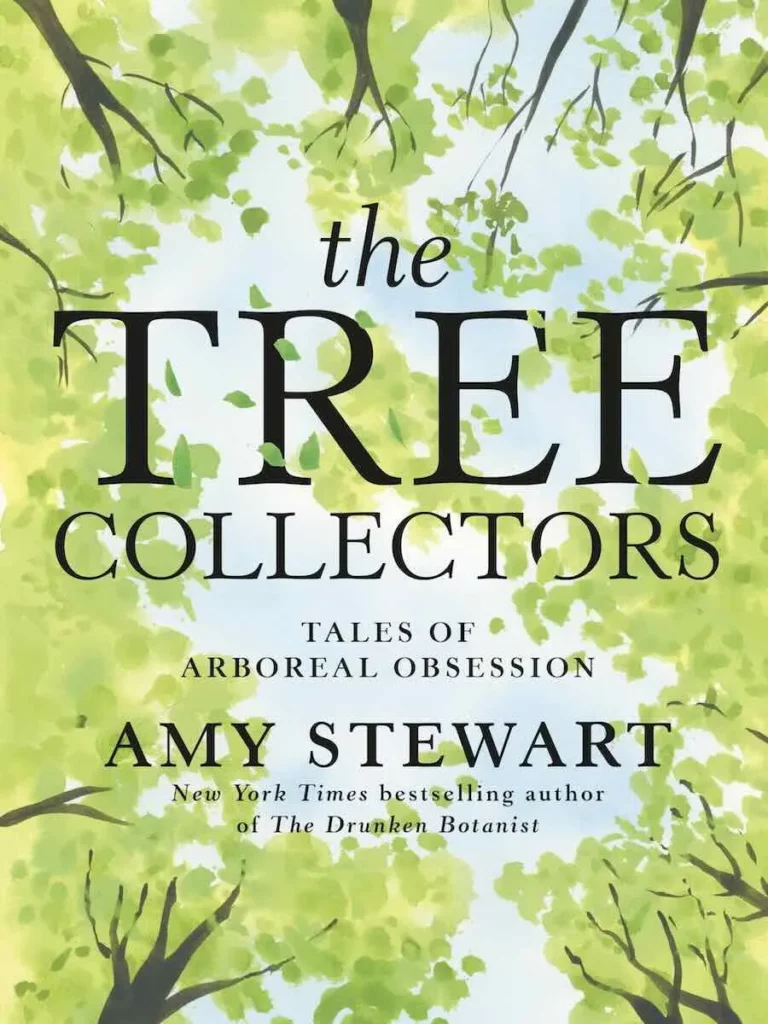
I have been a fan of Amy Stewart’s writings for many years. A couple of notable books come to mind: “Flower Confidential” (2007), about the cut-flower industry and plant breeders looking for that perfect flower—a blue rose, perhaps? and “The Drunken Botanist” (2013), a survey of the numerous plants worldwide that have been fermented and concocted over the centuries into alcoholic drinks—just check them out at your local liquor store and you’ll find all had their origins as plants. Now comes a new book from Stewart, “The Tree Collectors” (Random House, 2024), containing profiles of some 50 people who have obsessively bonded with trees in multiple and varied ways. Stewart illustrates the book with her watercolor portraits of these extraordinary people and the trees, fruits, and flowers they obsess over. In brief, you’ll meet a world of enthusiasts, curators, ecologists, preservationists, educators, artists and more who will introduce you to plant societies and a community of “collectors” whose passions are without bounds.
She covers a broad swath of tree aficionados: a topiarist (Mike Gibson), now in South Carolina, who originally began creating topiaries in Ohio and learned of the abstract art created by Pearl Fryar in Bishopville, South Carolina, whose work “closely resembled a Picasso or Henry Moore sculpture than clipped boxwoods.” Gibson helped restore the Fryar garden and now teaches nearby in Columbia.
In “The Tree Collectors” you will meet bonsai artists; rare fruit trees in Brazil; a camellia preservationist in Louisiana; pine cone, seed, leaf, and wood collectors; an arboretum at a nursing home for the chronic mentally ill in Poland; an expatriate’s arboretum in Chollipo, South Korea; zone pushers of tropical plants in Idaho; an Arctic arborist in Greenland; holly, apple, ginkgo, and magnolia collectors; champion trees; and the oak trees given to Olympic gold medal winners in Germany in 1936 (Jesse Owens received four Quercus robur)—and some places these oaks were planted around the world and are still surviving.
The Pulitzer-winning poet, W. S. Merwin moved to Hawaii and eventually turned nineteen acres of land, hoping to return it to a native rainforest. Over three decades he planted hundreds of palms, at the rate of one a day. The rarest he acquired was Tahina spectabilis, native to Madagascar, a gift from a palm specialist at Royal Botanic Gardens, Kew. Merwin is quoted as saying, “On the last day of the world, I would want to plant a tree.”
For the rock garden enthusiast Stewart writes of Far Reaches Botanical Conservancy in Washington, where Sue Milliken and Kelly Dodson operate a for-profit nursery and a non-profit conservancy, whose “broader purpose of the conservancy is to safeguard species under threat from human activity and climate change.”
I have one quibble about “The Tree Collectors” and that is the lack of an index. Coming from a household with a librarian, it’s not easy to find Dennis Wilson (the wood collector), or Tom Cox’s “Noah’s Ark of Plants” in Canton, Georgia; or even the arborist (Dave Muffly) at Steven Jobs’s Apple Computer campus in California, although admittedly the three are randomly listed in the contents. But without an index you wouldn’t know about the neem tree (Azidirachta indica) or the Baishanzu fir (Abies beshanzuensis).
Overall, “The Tree Collectors” is a worthy addition for your bookshelf. Like coin or stamp collectors, you’ll meet some geeky, obsessed, passionate, but also normal people—some on a lifelong pursuit. “I started to see that the life of a tree collector is filled with adventure and wonder. It is a life well lived,” Stewart writes.
And, yes, the pages of Stewart’s book are made of paper . . . from trees.
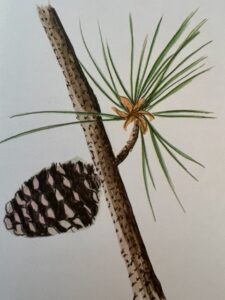
Jim Hollister Reviews
From Wasteland to Wonder
by Basil Camu

This is a well written and richly illustrated book. It is the first book I have experienced that is loaded with QR codes that will take the reader to supporting articles or videos. I checked out most of them and found them to be worthwhile. You can tell Basil thinks outside the box and this outside the box thinking makes for a compelling reading/learning experience.
Basil leads the reader through how healthy natural systems work. Soil, water, critters… He then describes some of the ways we have worked to defeat these healthy natural systems, and then on to practical ways each of us can do things around our homes to make our corner of the world a little bit better.
But his vision goes beyond the individual yard to communities. He has created Project Pando. Project Pando works with the community to collect seeds from native trees and shrubs. They then grow these seeds into saplings and then give them away to restoration projects. They support this work with research, education, and events that help further their mission.
Basil really stresses the growth of natives. We all know the argument for natives… basically native bug food. And I am happy to include many natives in my garden, but we all know many “exotics” can also nurture our native critters. Take, for example, Aristolochia fimbriata, the South American pipevine. Our North American Pipevine Swallowtails love to lay their eggs on it and the little caterpillars grow fat as they eat the Aristolochia to the ground, but being a geophyte the pipevine comes back quickly to feed another brood. I’d say we also know the importance of feeding our soil and not trying to cure everything with a chemical cocktail, so I think overall he would generally approve of what we do and consider us as allies in the job of healing the Earth.
I would love to be able to get my neighbors to embrace a more natural approach to maintaining the landscape. This book is offered through the Leaf & Limb website as an ebook for free, or a hardcopy for the very reasonable price of $10.75. I opted for the hard copy and I am glad I did. It is a beautiful book.

Plant Profile: Trachelospermum asiaticum ‘Ogon Nishiki’
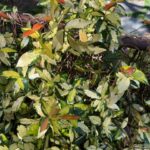
An evergreen vine, leaves gold with dark green edges. The emerging leaves are a bright orange-red. It is tough and totally drought tolerant. Mine has been in a hypertufa trough for 20 years and has not drooped once!! It is deer resistant, takes sun or part shade, and takes a minimum temperature of 10F. It did not mind the cold 11 degrees a couple of winters ago. Being a vine, it does run, but confined in a trough it has not been invasive.
The color is a stand out all year. Truly a tough plant with many good features.
by Amelia Lane
Piedmont Donates
Money raised at plant sales and auctions helps the Piedmont Chapter support other organizations in the horticulture community.
Thanks to all our donors and members!
2024 donations total $6000, including $2500 each to the JC Raulston Arboretum and Juniper Level Botanic Garden Foundation, and $1000 to the NARGS Traveling Speaker Program.
Refreshment Rota
Bring goodies to share!
September, last names A-C
October D-F, November G-H
January J-L, February M-P
March R-S, April T-Z
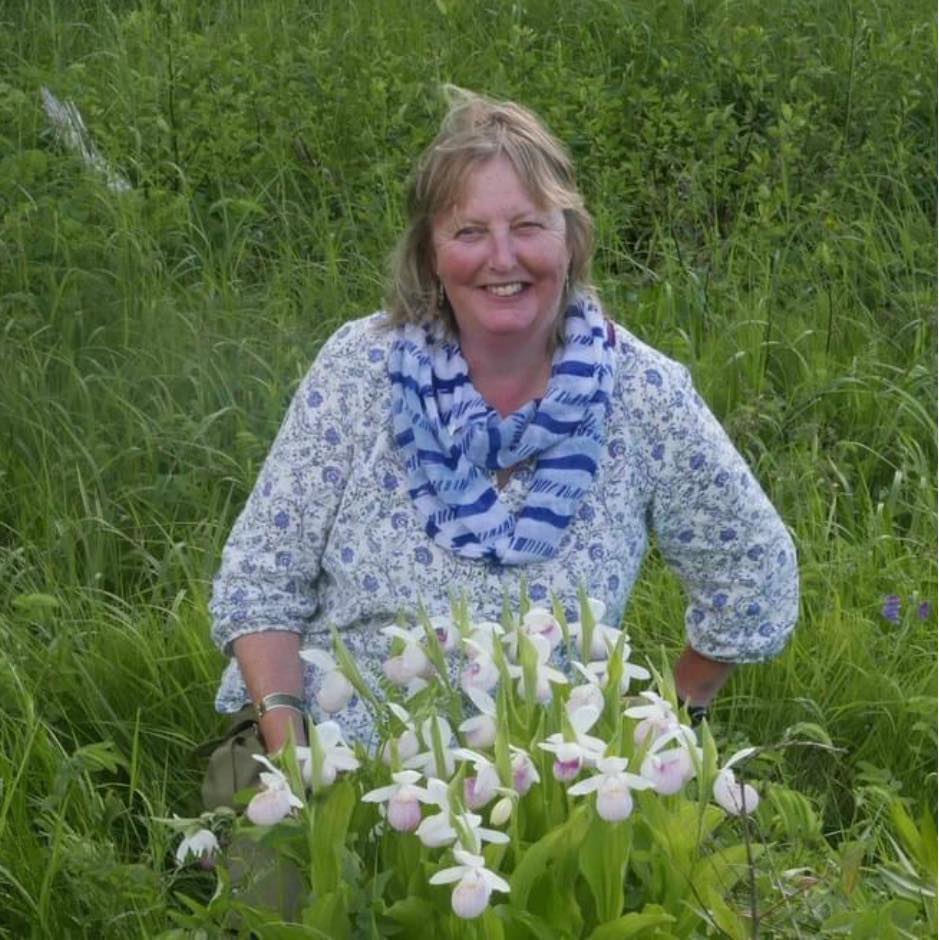
Julia Corden took her early training in Horticulture at Royal Horticultural Society Wisley and Royal Botanical Garden Edinburgh She has judged at the Chelsea Flower Show and served on RHS Committees. She has been very involved with the Scottish Rock Garden Club and is past President
She has led tours for the Alpine Garden Society, the Scottish Rock Garden Club and the Royal Horticultural Society She is also a Freelance Botanical/Garden Tour Guide for Brightwater Holidays and has led tours to Switzerland, Greece, Costa Rica, Chile, South Africa, Japan and New Zealand to name a few.
Up until the onset of the Covid Pandemic, she was the Garden Manager at the Explorers Garden in Pitlochry and is currently the Head Gardener at The Goodwood Estate in West Sussex.
Coming October 10-11, 2025
Piedmont Chapter’s 40th Anniversary Weekend!
Help plan our big celebration!
Contact: Chapter Chair Sandy Harwood
email listed on Members Only page
SAVE THE DATES
Friday, October 10, 2025
Gala dinner with keynote speaker Julia Corden
Open to chapter members and guests only
Saturday, October 11, 2025
Chapter meeting at JCRA with NARGS Traveling Speaker Julia Corden
Open to chapter members and the public
Message from the Chair
Almost official fall greetings. I suspect you too are welcoming the cooler temps and looking forward to our chapter 2024-2025 year. Bobby has put together another great year of programs and speakers. In 2025 we will be celebrating a chapter anniversary and legacy of 40 years with some special events – in addition to our traditional picnicking, botanizing field trips, selling plants, packaging seeds, welcoming new members and more. I am looking forward to catching up on your summer travel adventures, new plant obsessions, summer standouts and other surprises.
We are also in what I will call the PMTE – ‘Post Marian Trillium Era’. As most of you know Marian Stephenson retired earlier this year after 20 years as editor of our outstanding newsletter ‘The Trillium’. A very very special thanks to Cyndy who is creating a home for content on the website.
Please invite or bring a friend to meetings, continue to explore the website and peruse (explore, revisit, binge) the 67 program videos in our playlist on the JC Raulston YouTube channel.
Cheers and keep growing!
Sandy
Members Please Note
Lasting Impressions’ Garage Gallery & Plant Sale
Saturday, October 26, 2024
10am-2pm
4904 Hermitage Dr., Raleigh, NC 27612
Please join us for our Fall sale, 20% off hypertufa troughs and concrete leaves. There will be plenty of plants too, just in time for fall planting. We hope you can come and enjoy the garden.
The August 3, 2024 Board Meeting Minutes, including Financial and Program Reports, submitted by Char Thomann, Secretary, are available at the link: NARGS minutes 8-3-2024
Chapter members are invited to submit articles, book reviews and photos for online publication to Cyndy Cromwell – find my email on the Members Only page. Travel, gardening techniques and stories, plant profiles and book reviews are some of the topics you might cover. Thanks for your contributions!


